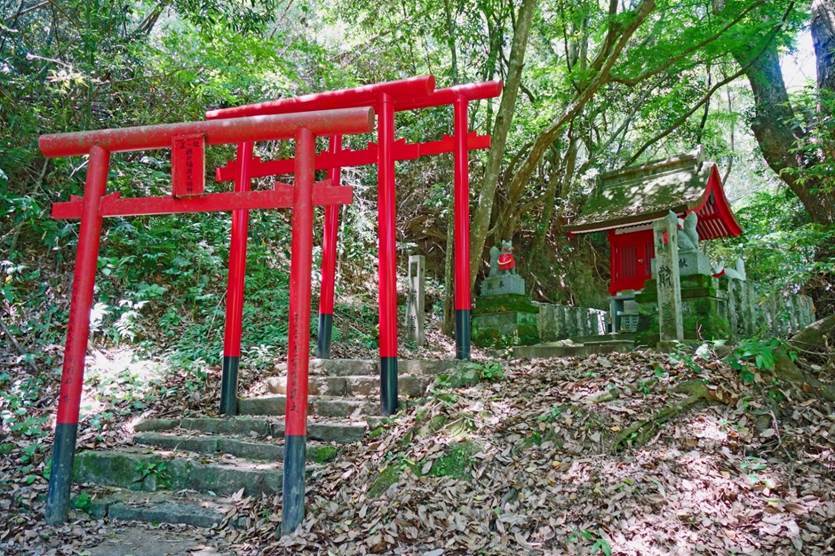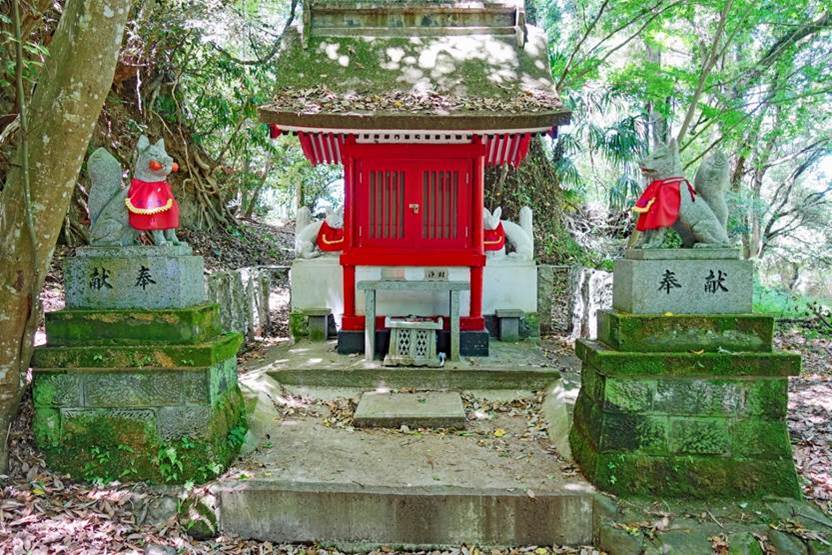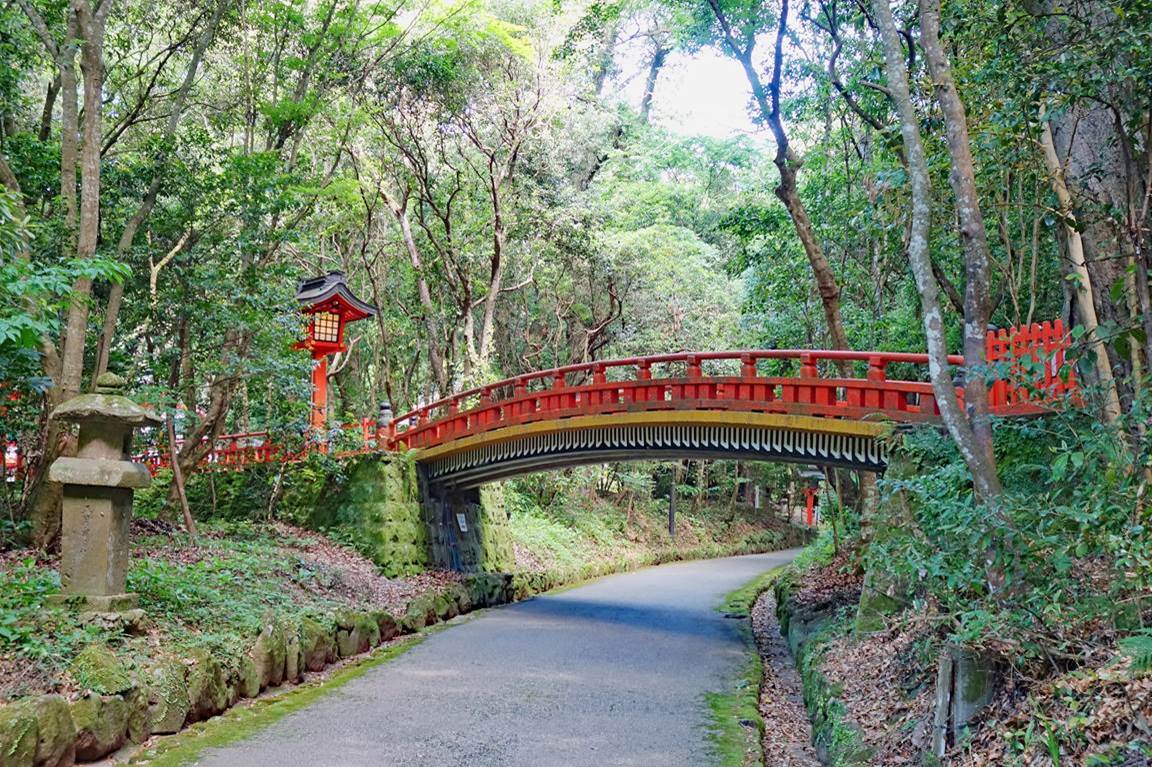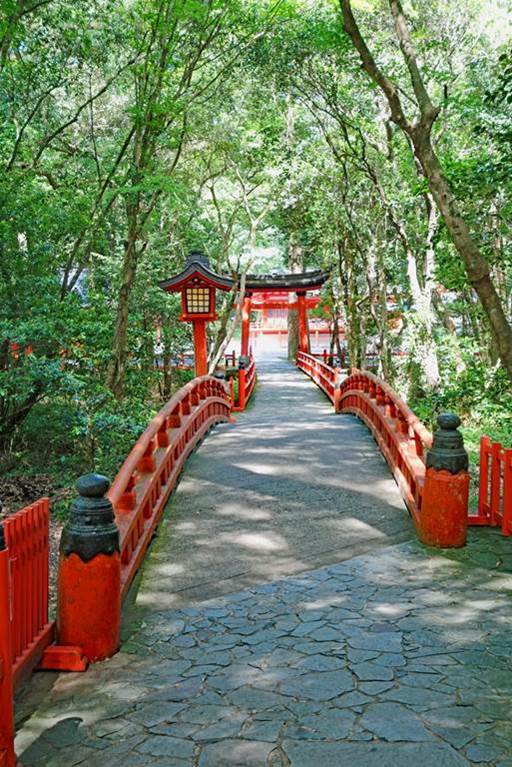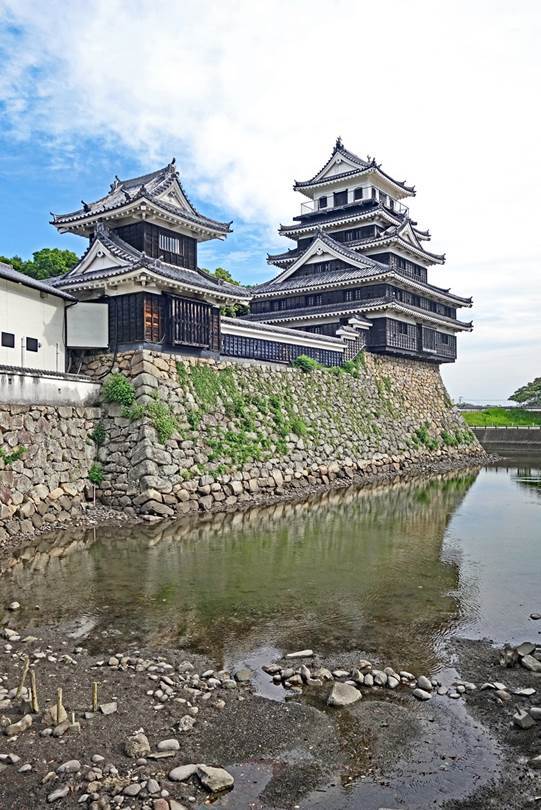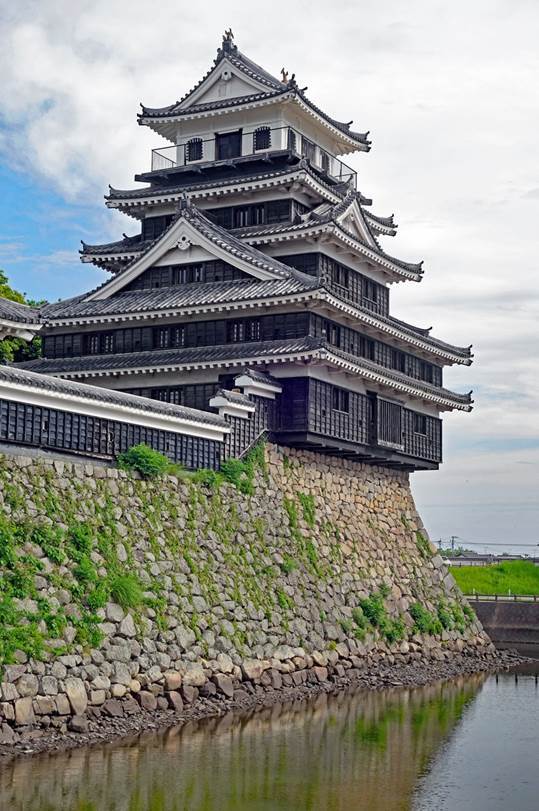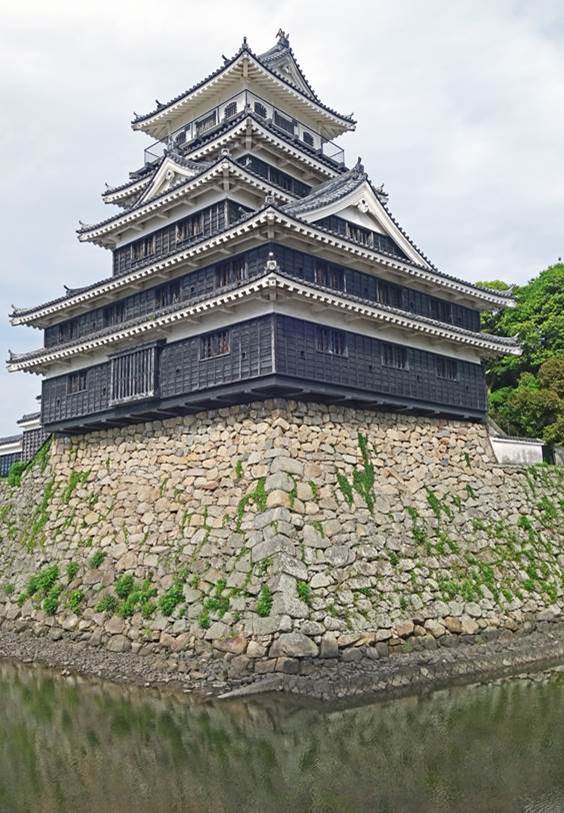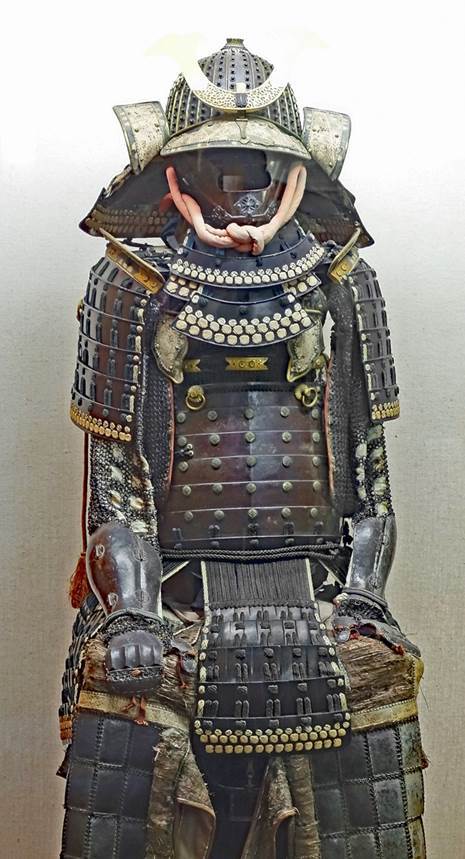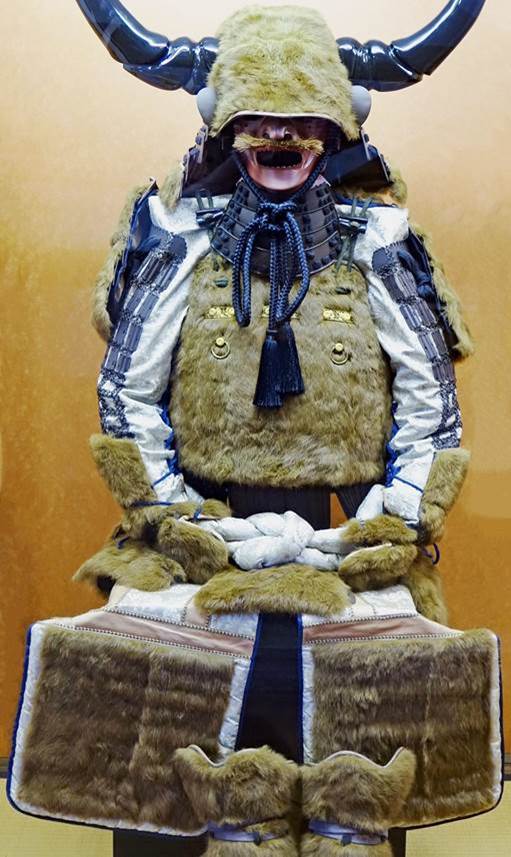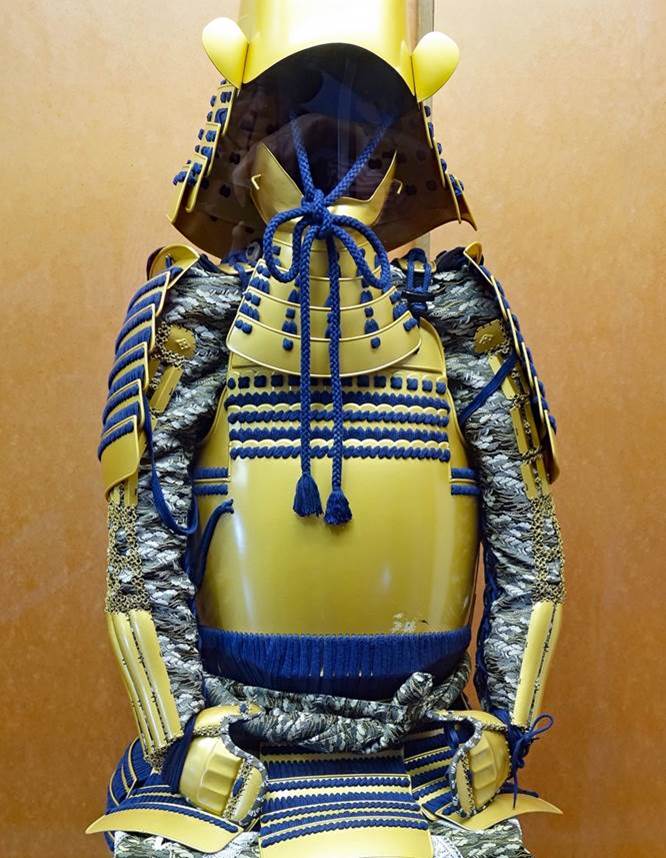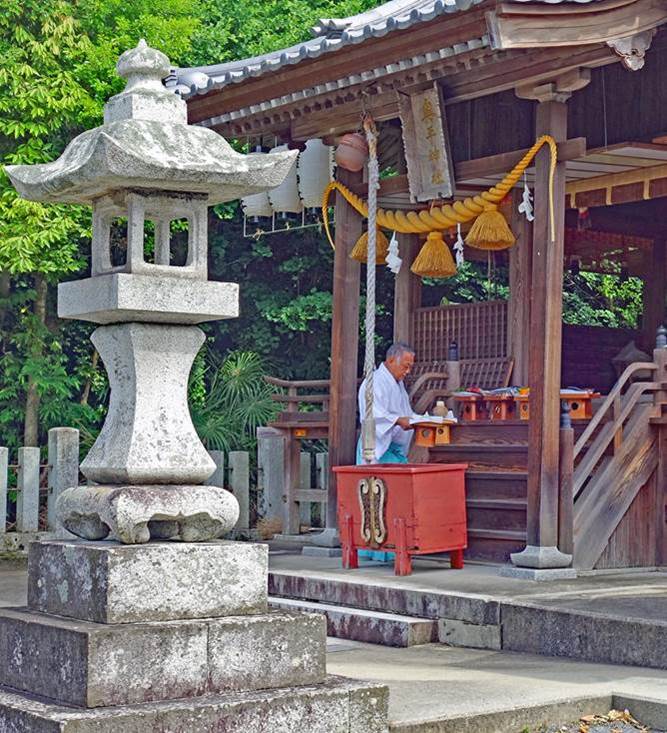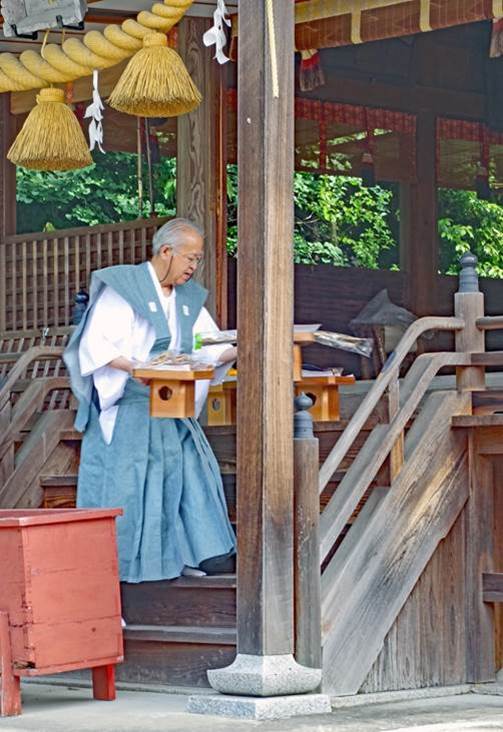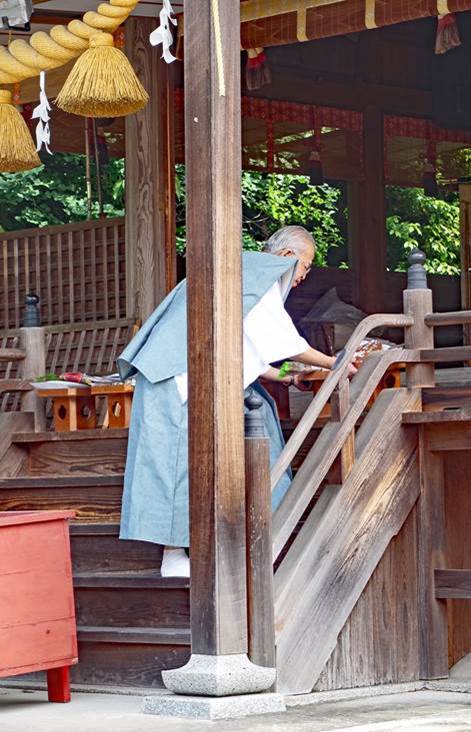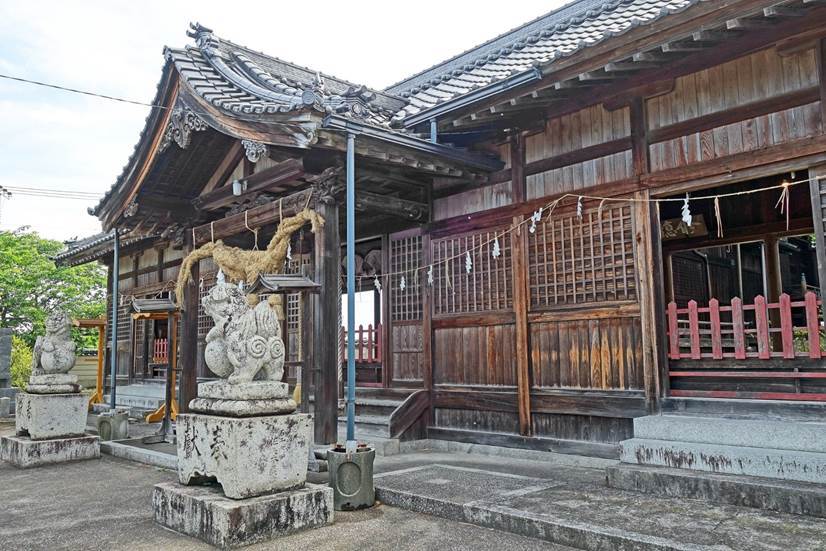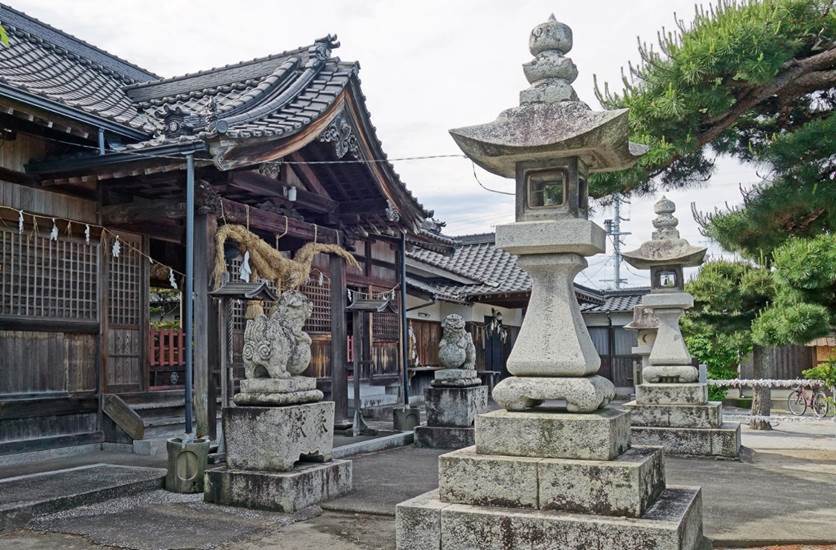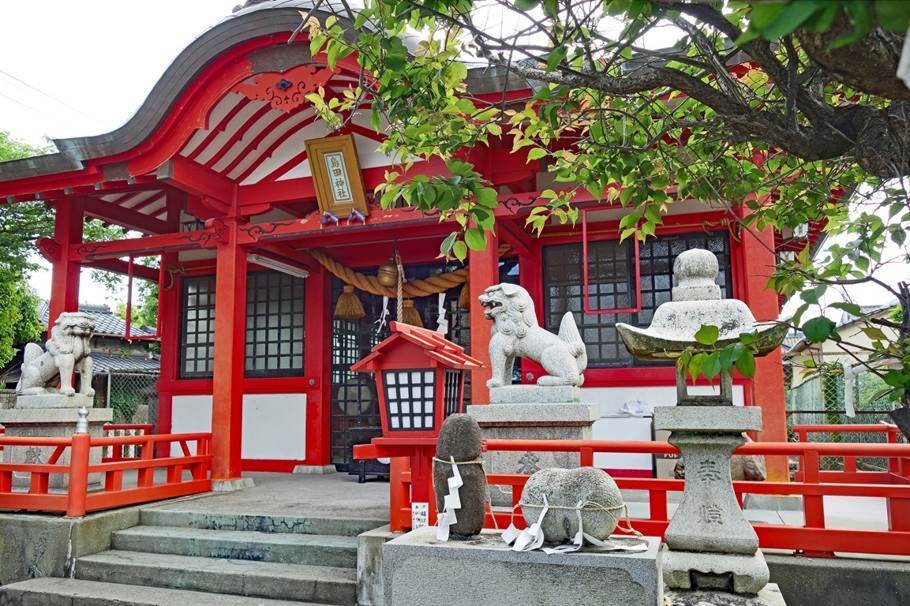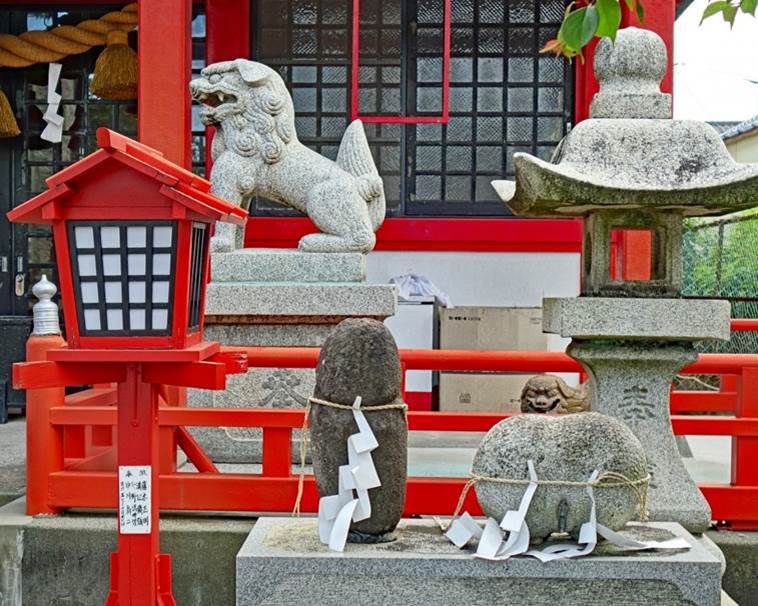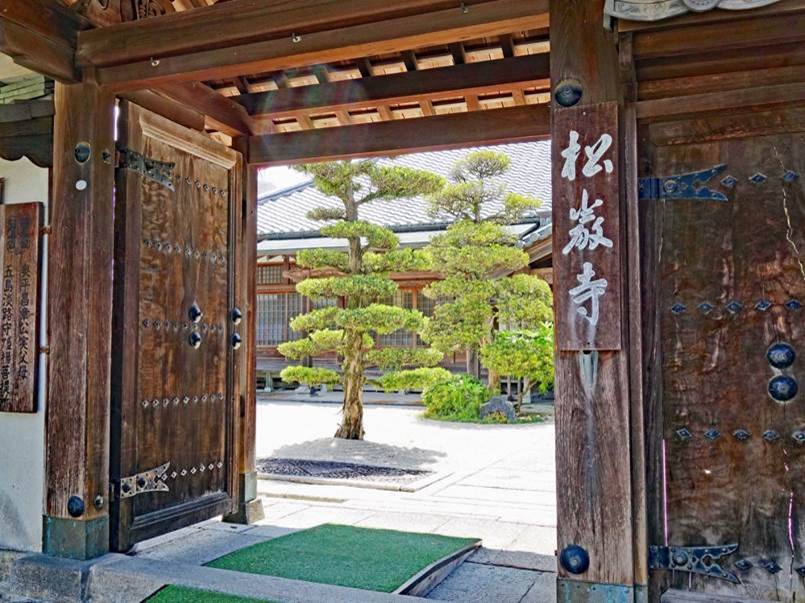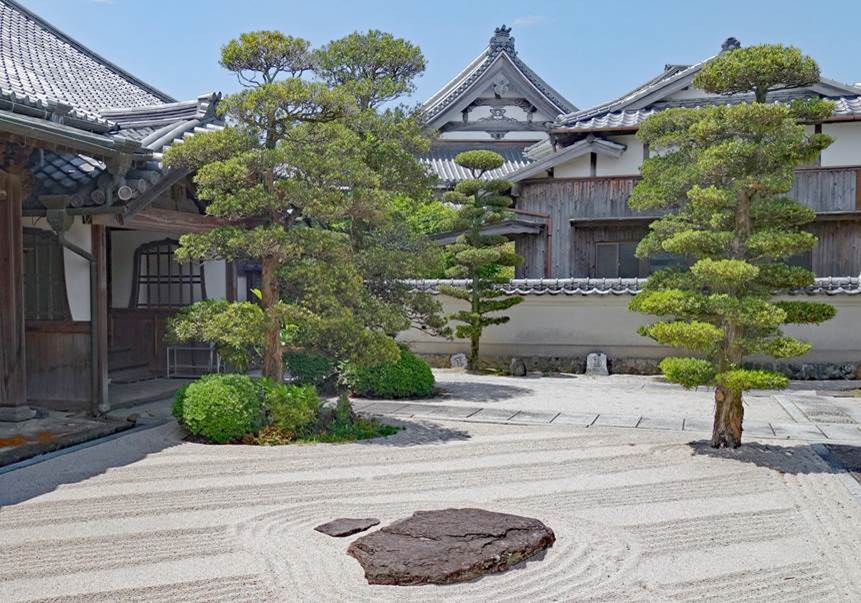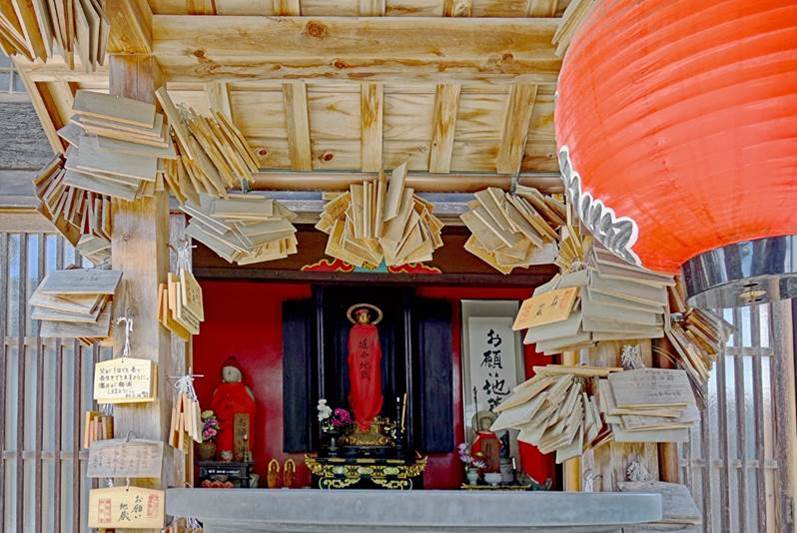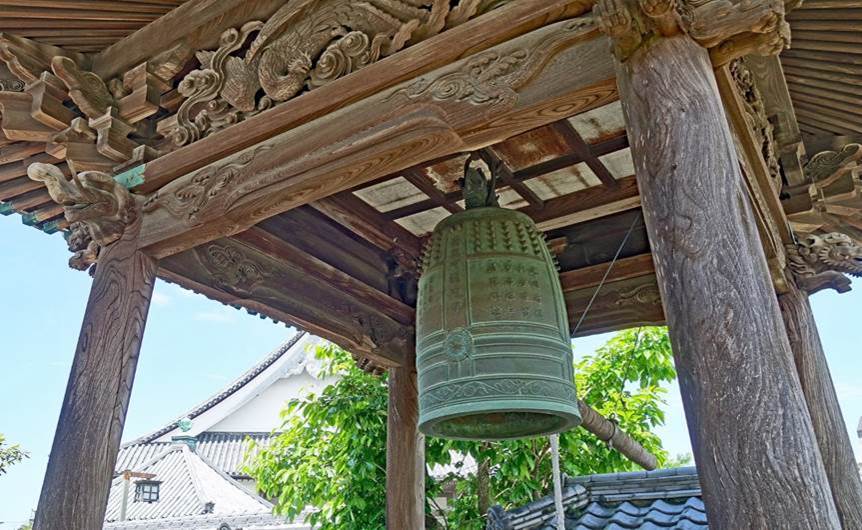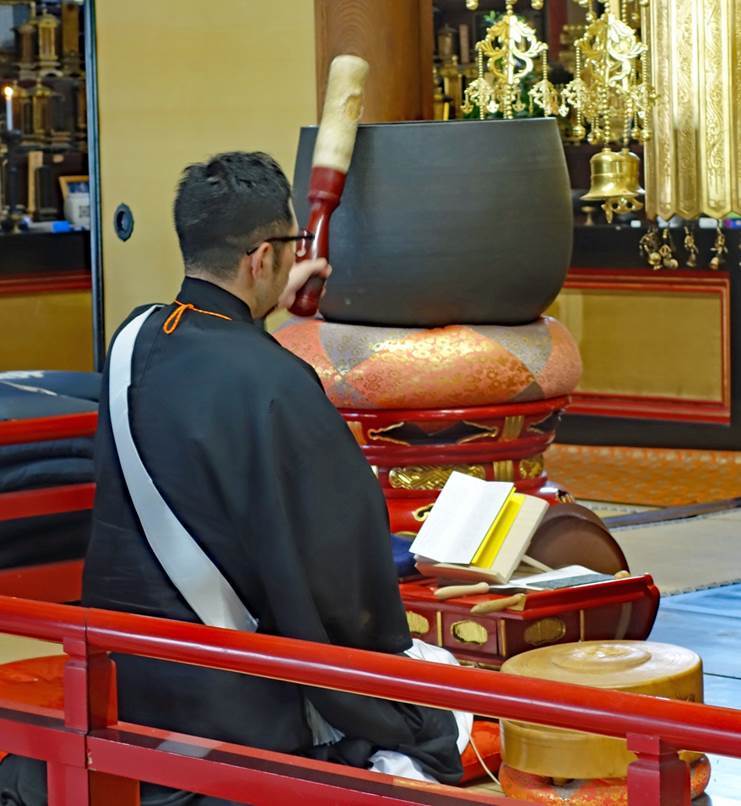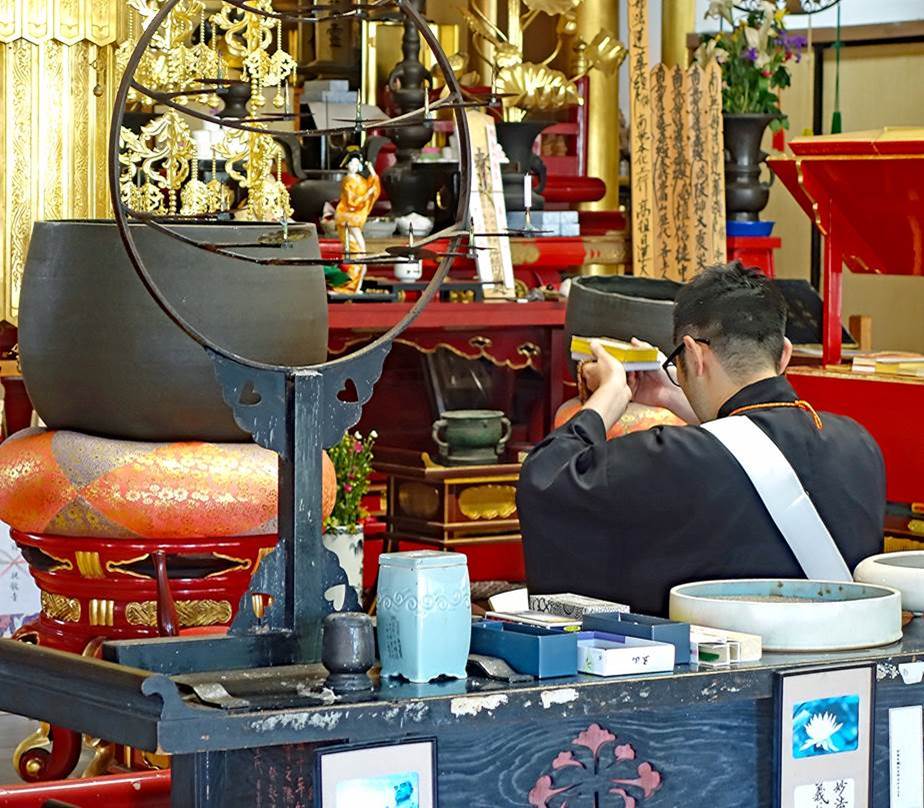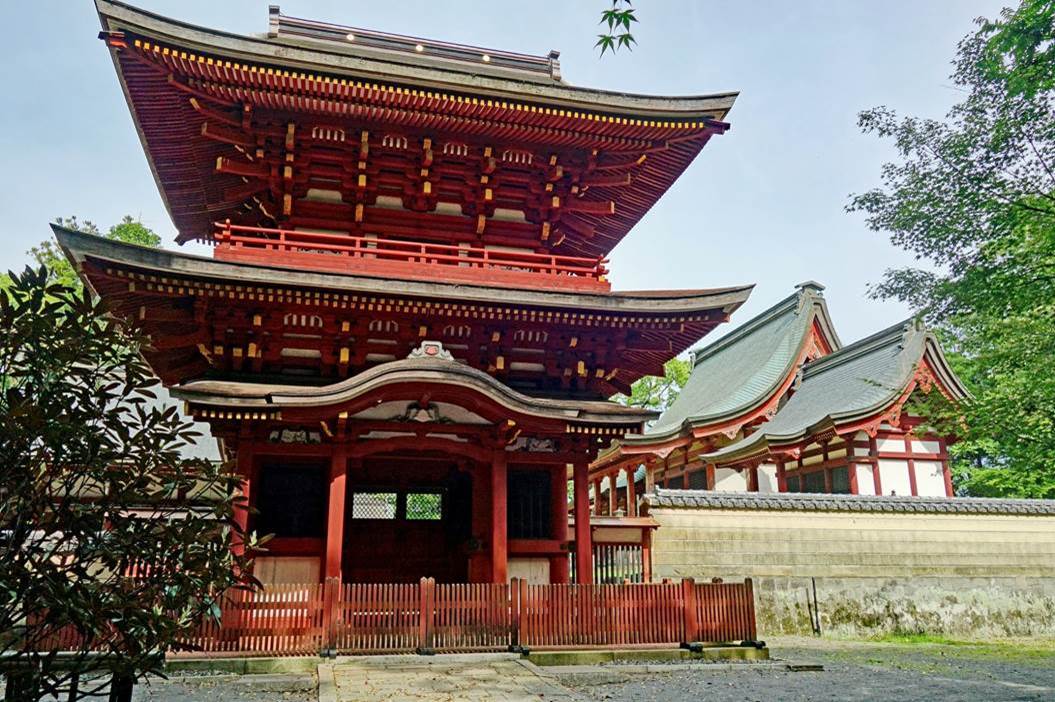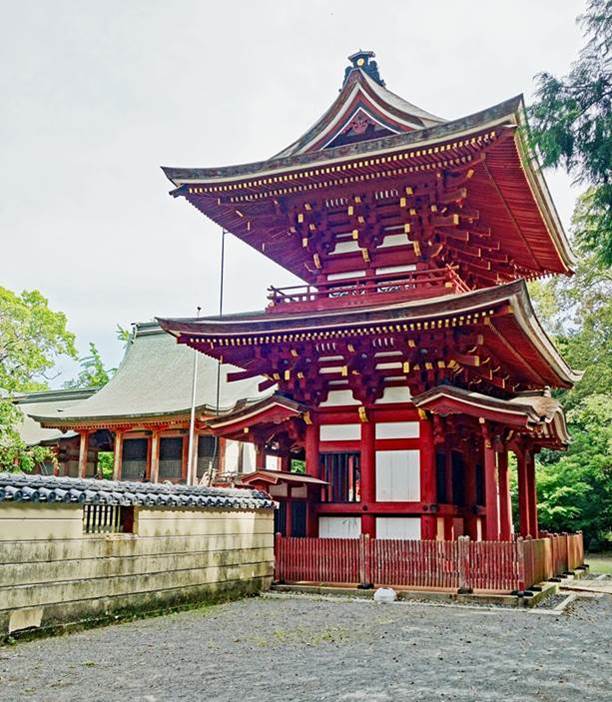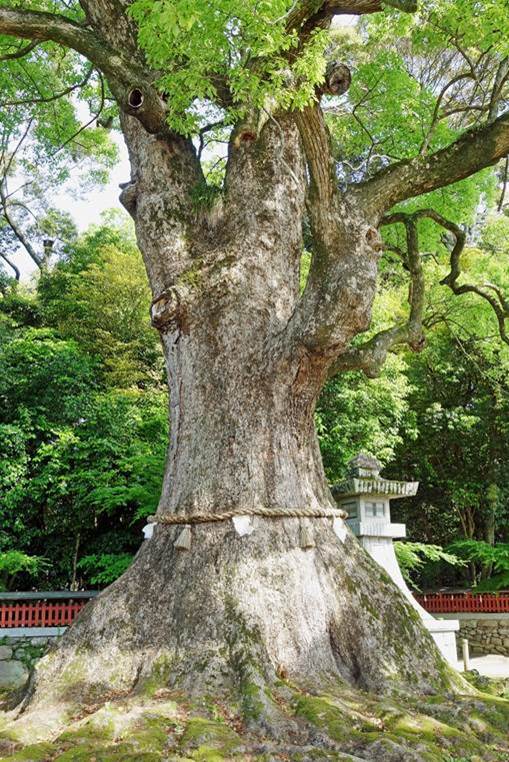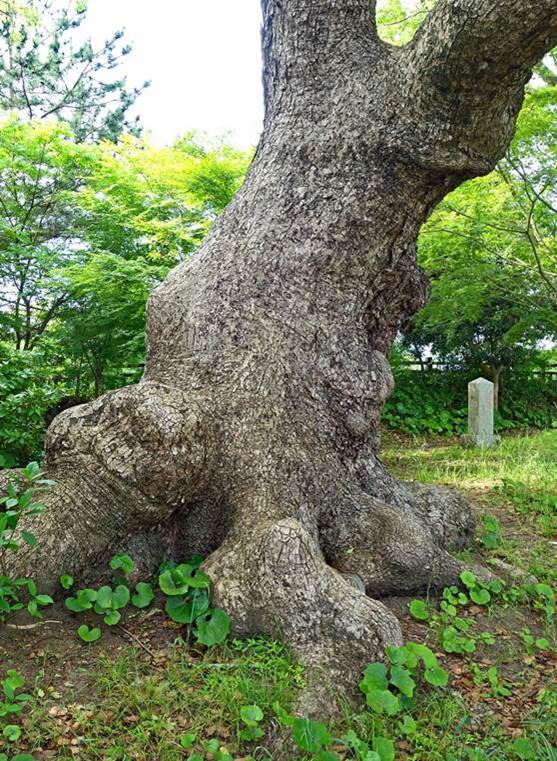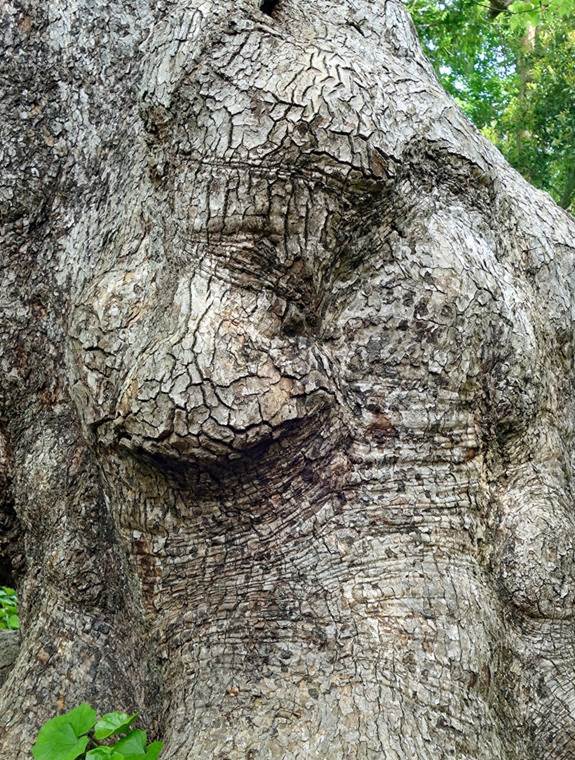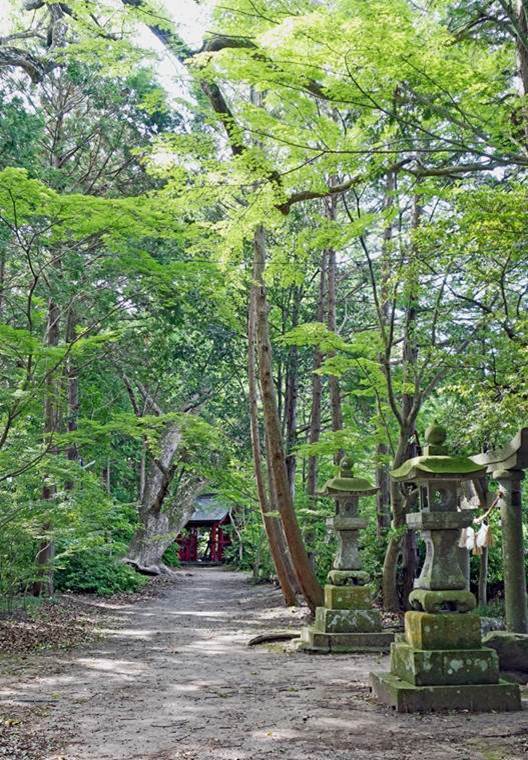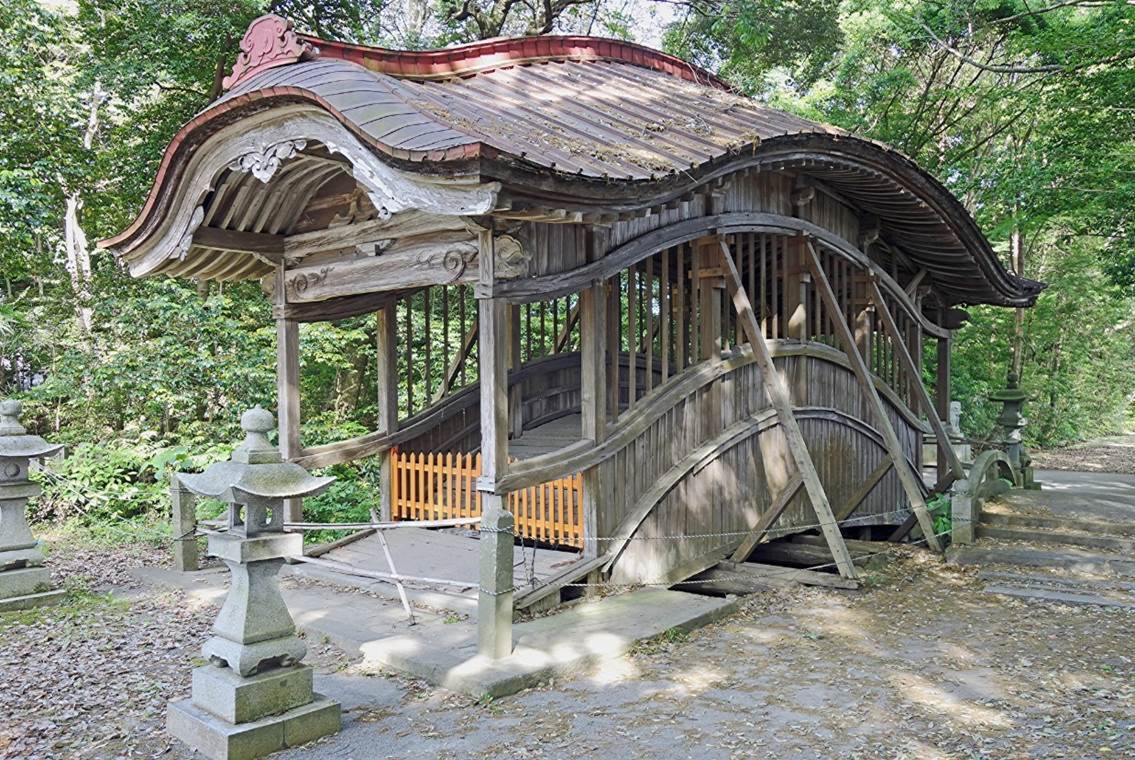Usa Jingu and Nakatsu, Kyushu, Japan (May
2024)
![]()
Back to main Japan May 2024 page
Both Usa Jingu and Nakatsu are located in the north of the Oita
Prefecture, west of the Kinusaki peninsula. Founded
in the 8th century, Usa Jingu, also called Usa Hachimangu, is the head
shrine of thousands of Shinto shrines across Japan that are dedicated to
Hachiman, the god of war. Nakatsu, the third largest city in the Oita
Prefecture, is the home town of Fukuzawa Yukichi and a former castle town on
the coast of the Seto Interior Sea.
Usa Jingu
Located about
3.5km west of the Usa station, this Shinto shrine
covers an extended area, with multiple shrines, ponds, a treasure hall, a Noh
stage, and more. Unfortunately, at the time of my visit, the main shrine was
undergoing renovation.
The Kure
bridge with its thatched roof, built over the Orimo
river, on the western edge of the compound. The doors of this sacred bridge are
opened only on very rare occasions.
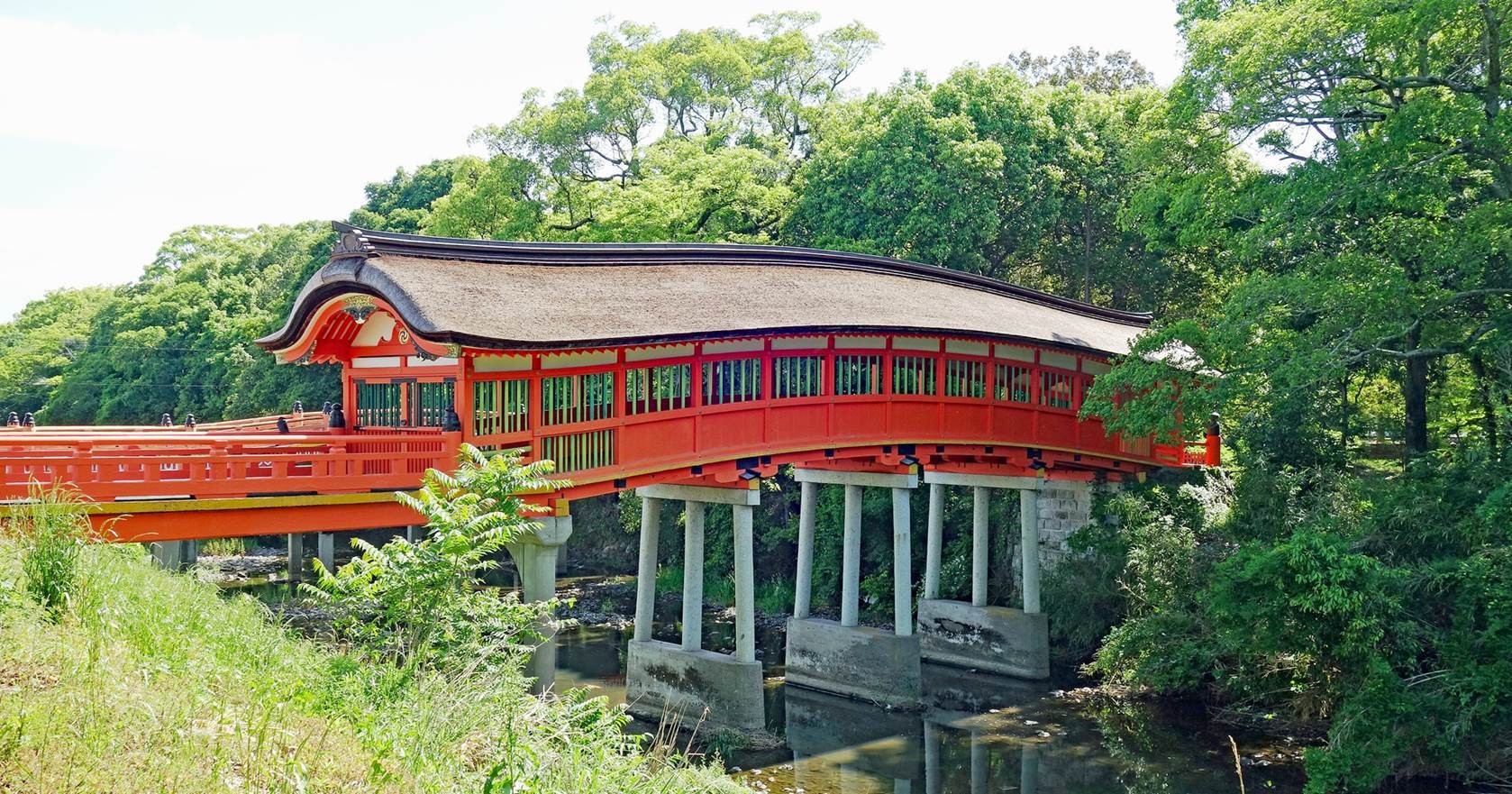
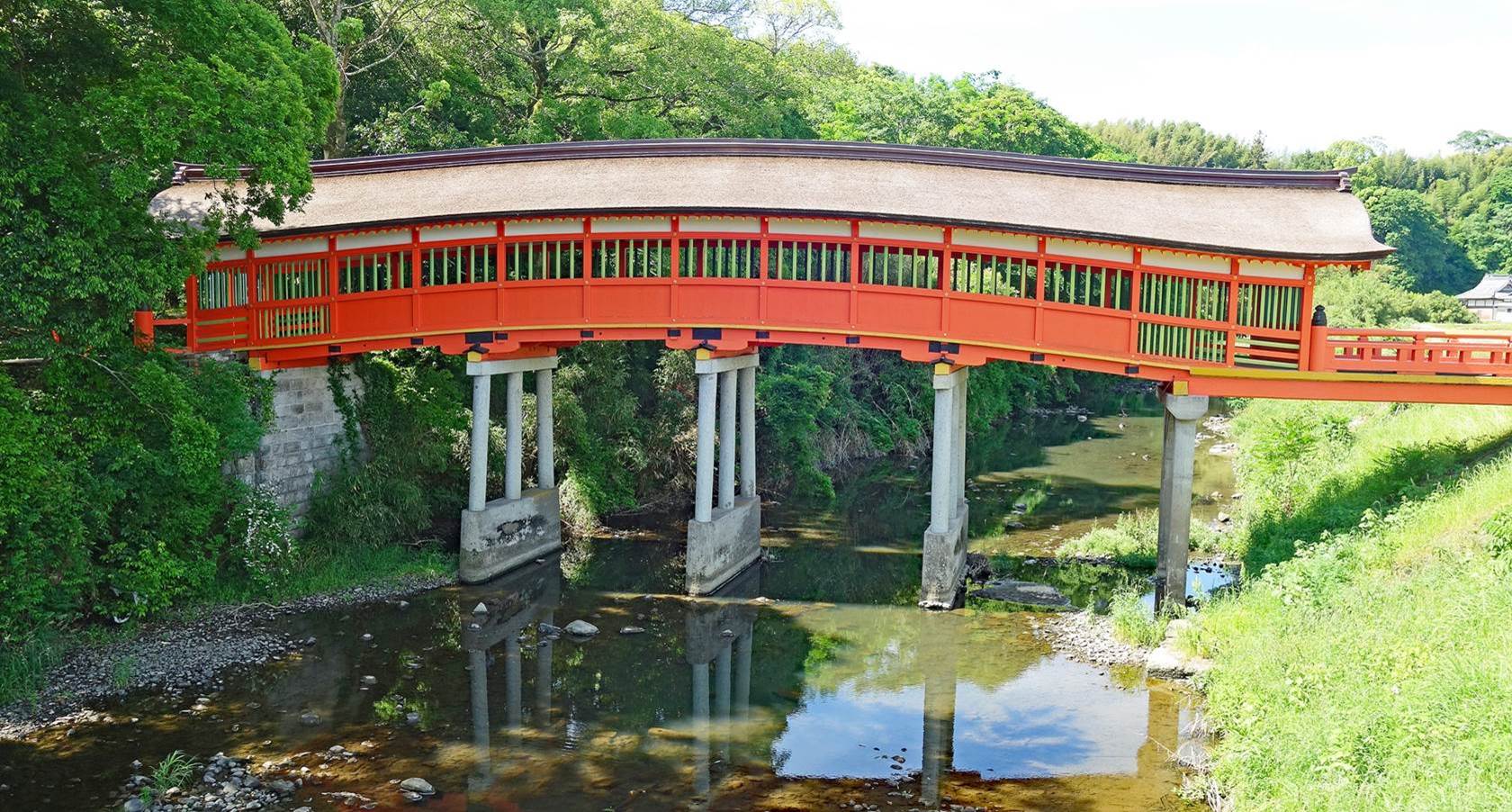
Small Inari
shrine in the compound, close to the Kure bridge.
|
|
|
Another tiny
shrine located nearby.
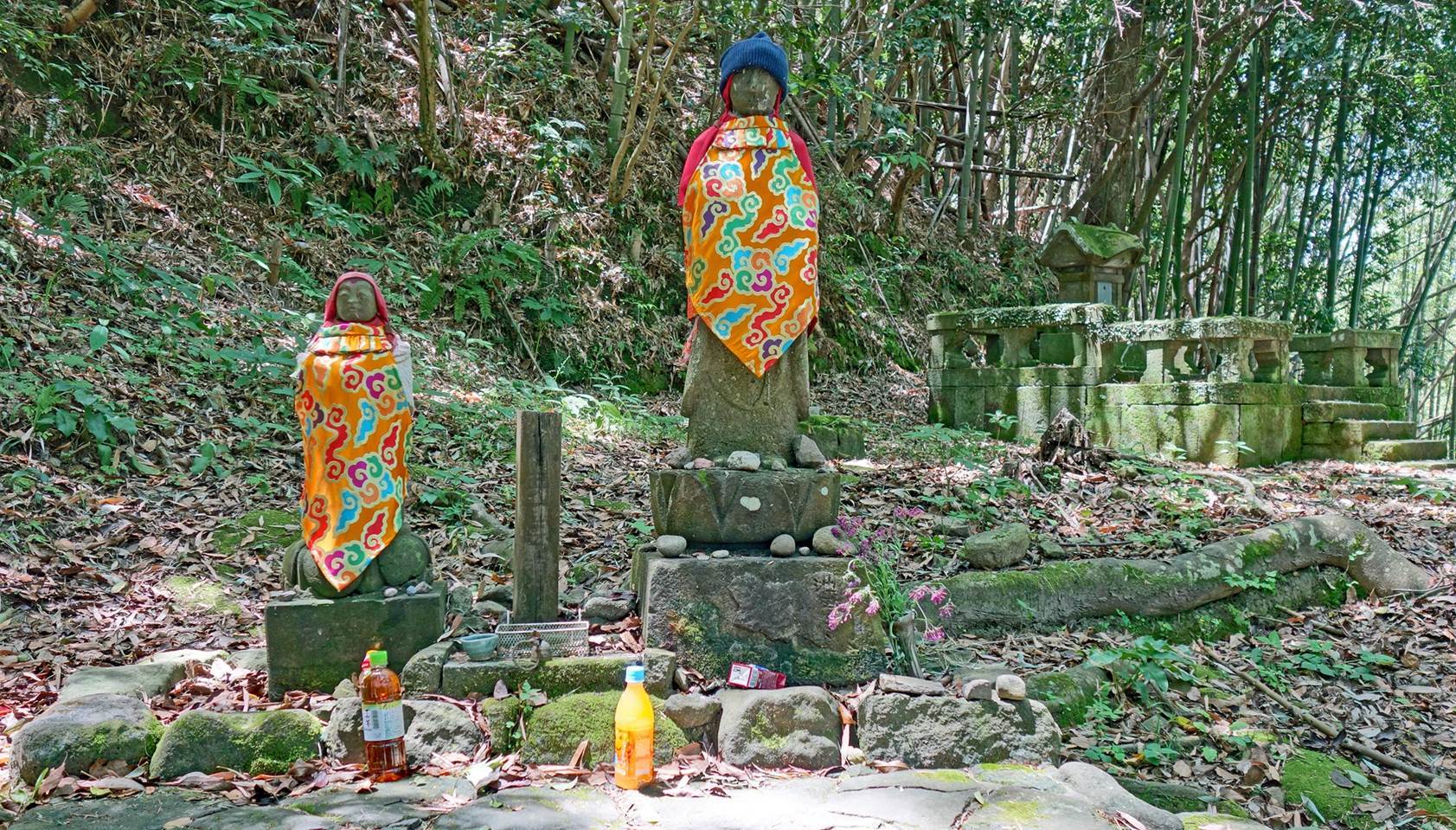
The Yasaka shrine further inside the compound.
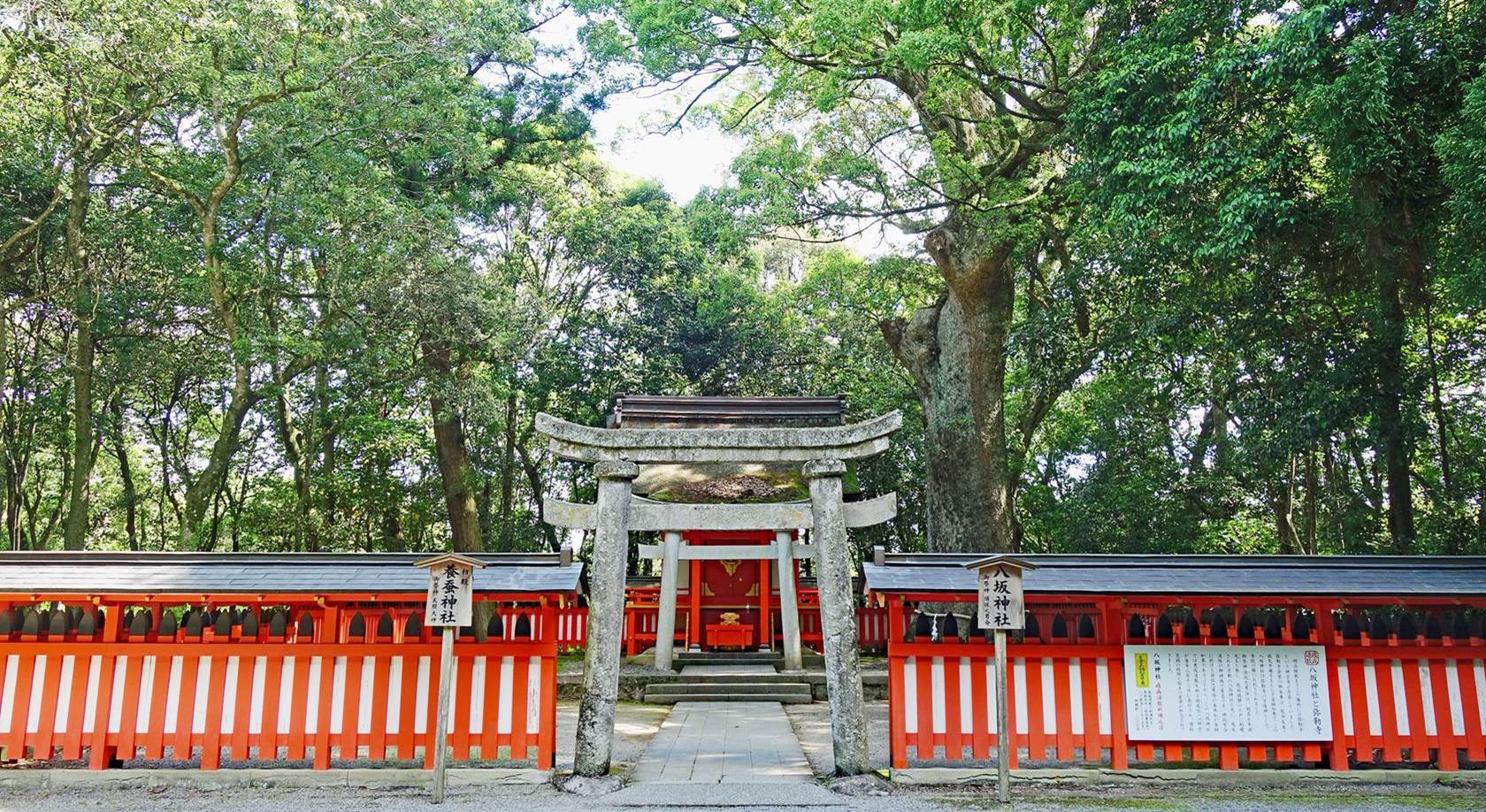
Wall of sake
barrels and bottles. This kind of wall celebrates the spiritual connection that
the people of Japan make between the gods and the sake they produce.
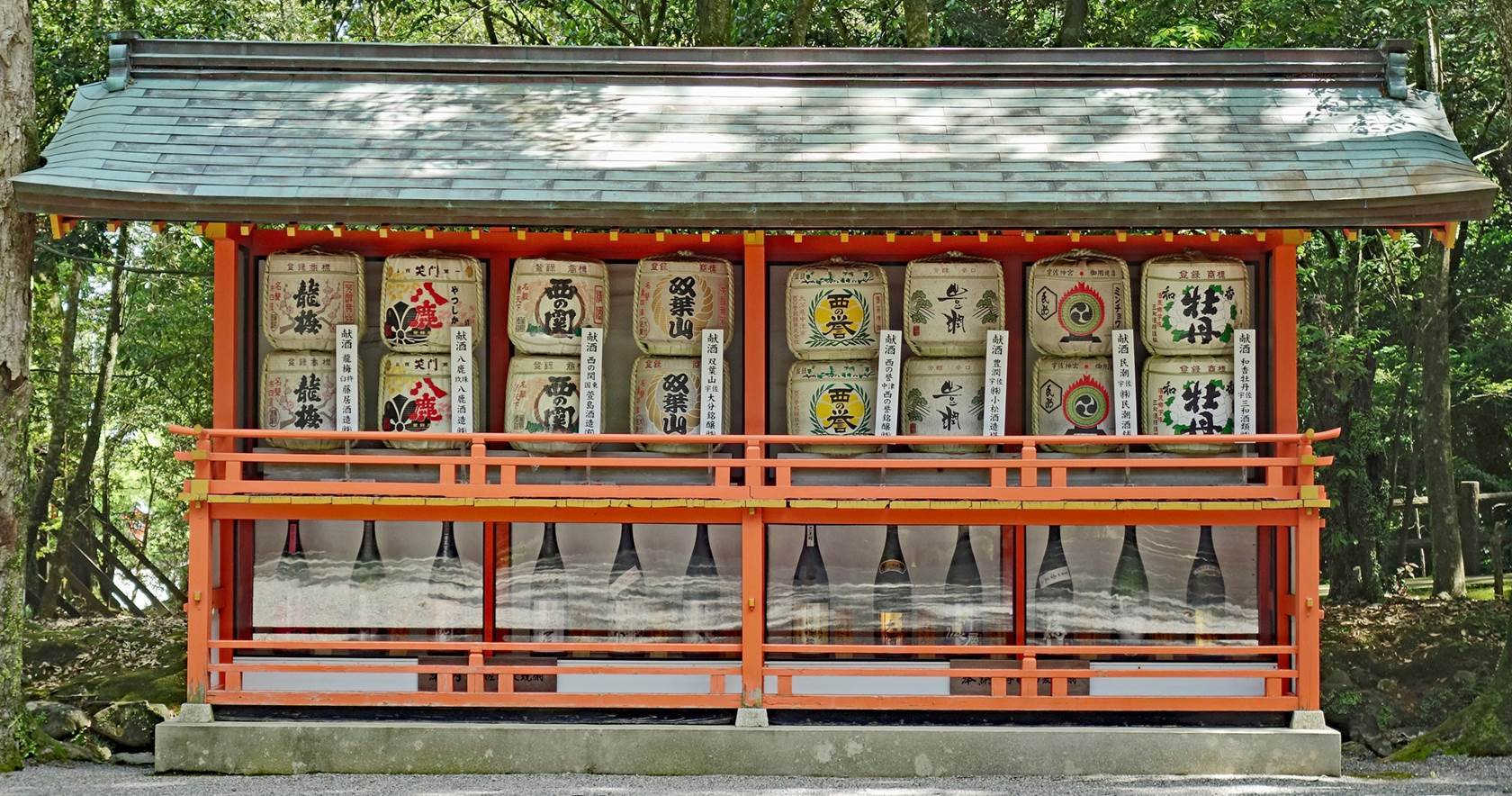
Immediately
after passing the sake wall, the path splits into two branches, each marked by
a torii. The left branch leads to the main shrine of the compound, which sits
on top of a hill. The right branch goes to the second main shrine, Shimoniya.
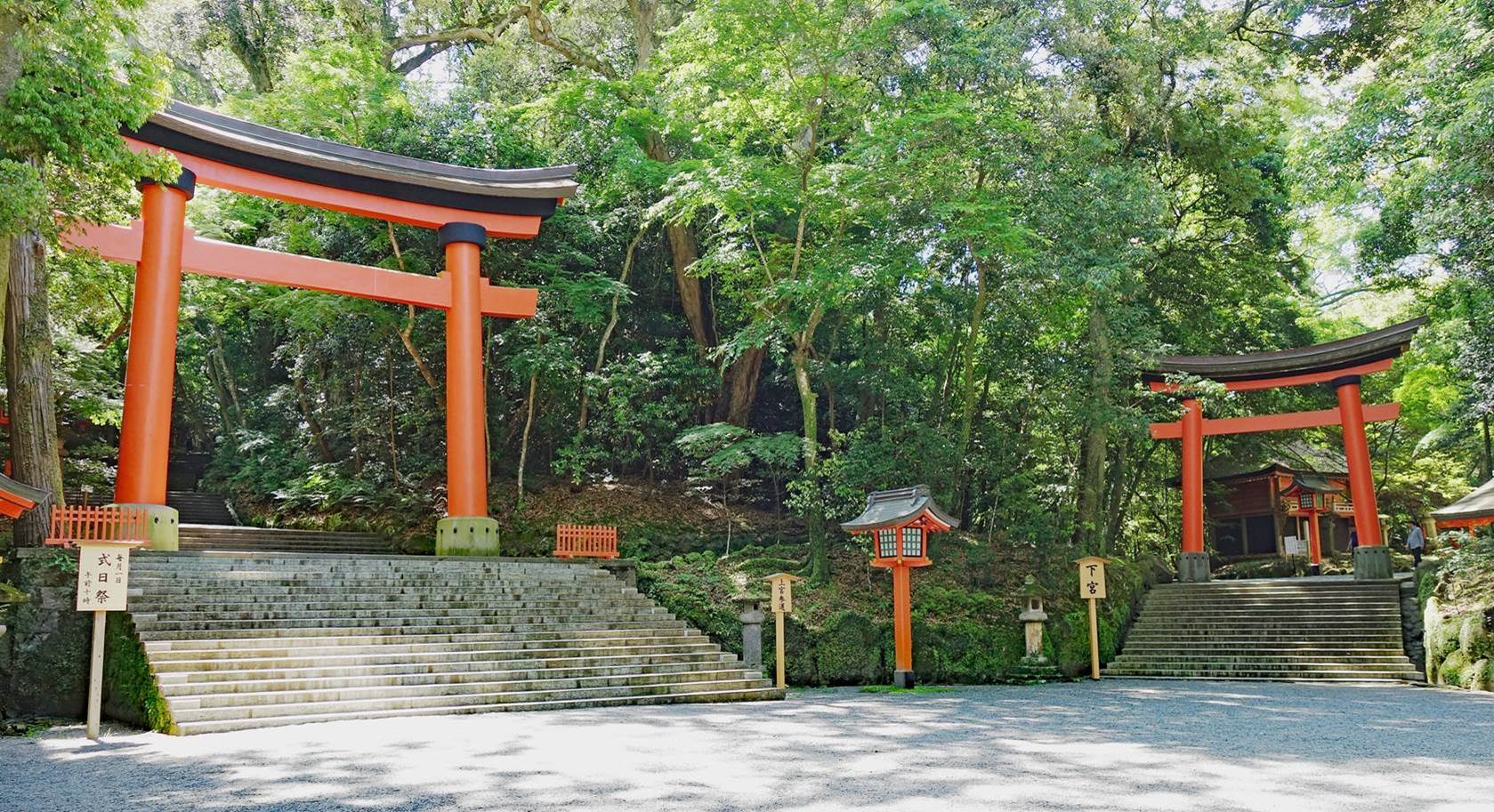
Pedestrian
bridge over a narrow road. The bridge is used by a walking path that connects
the main shrine and Shimoniya.
|
|
|
The Shimoniya shrine.
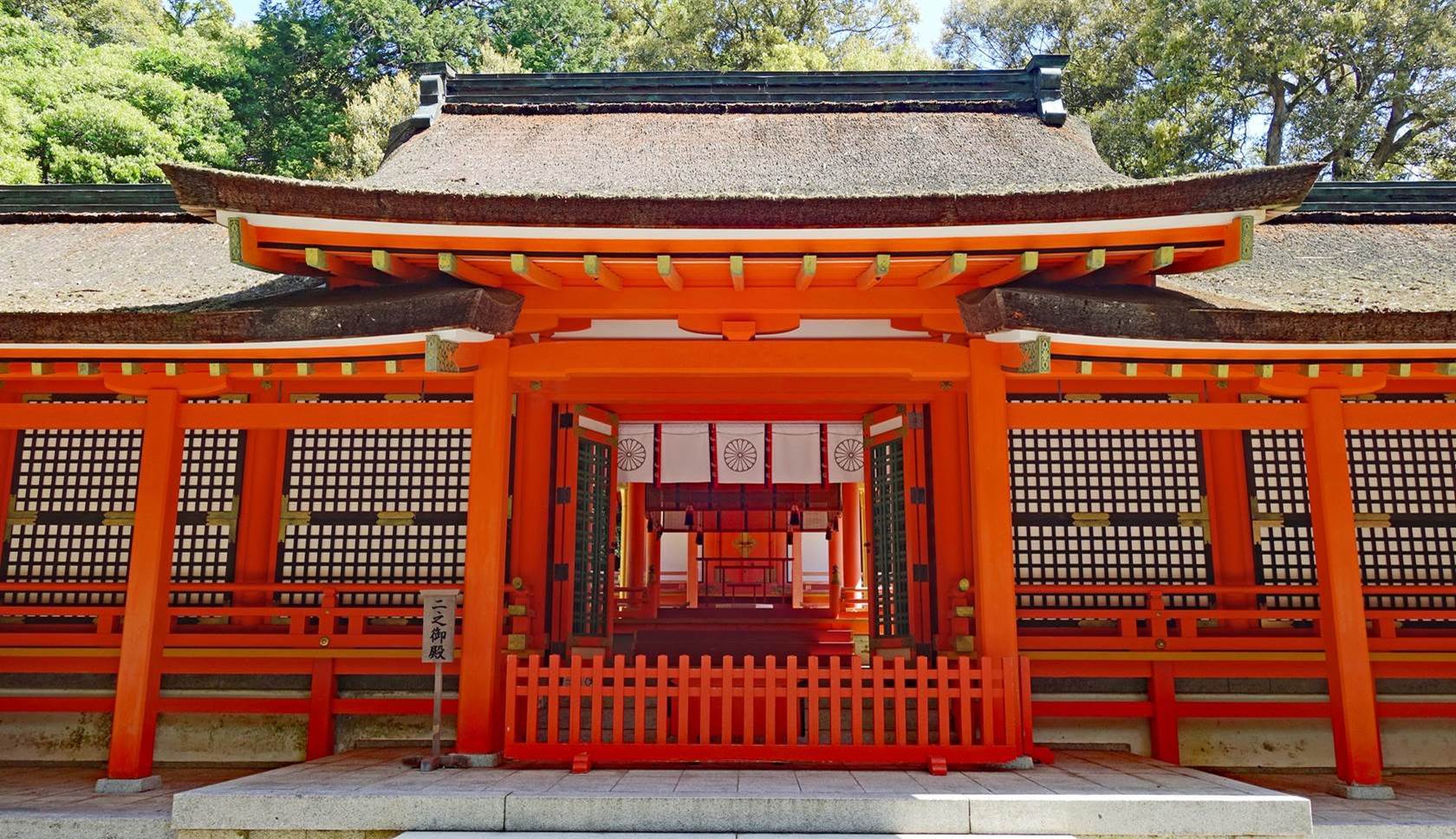
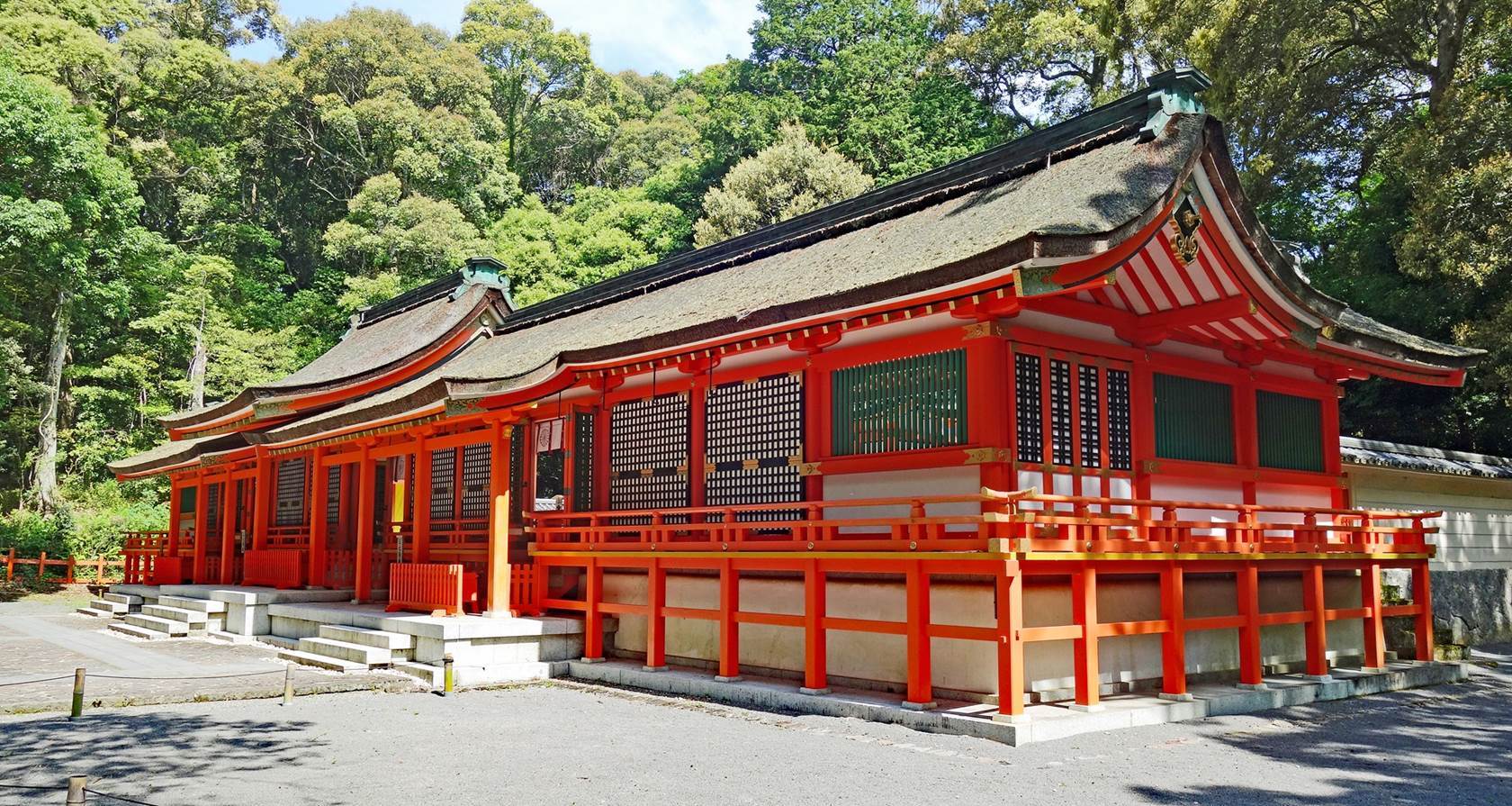
Views of the Hishigata pond and its beautiful bridges, north of the main
shrine.
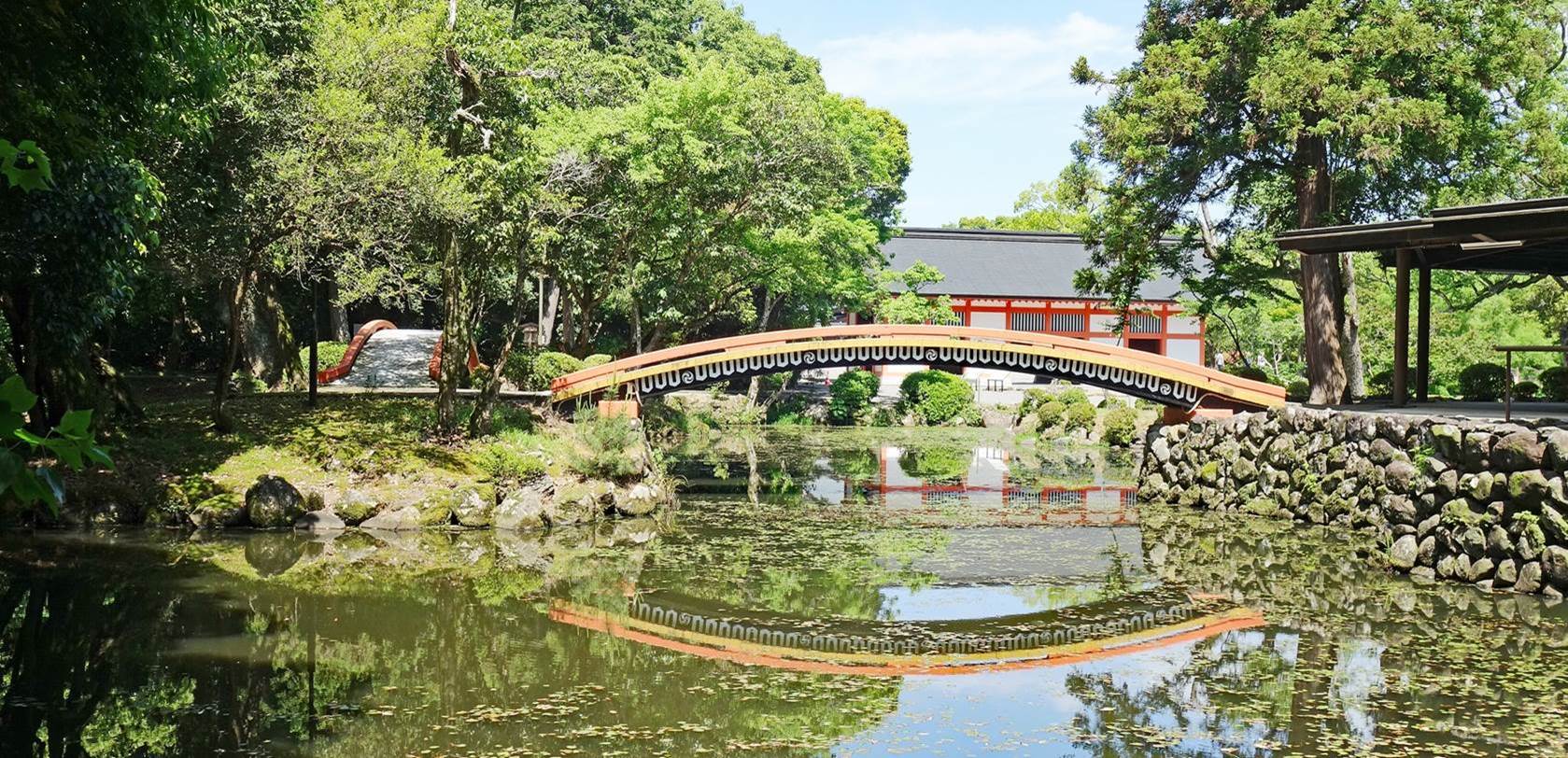
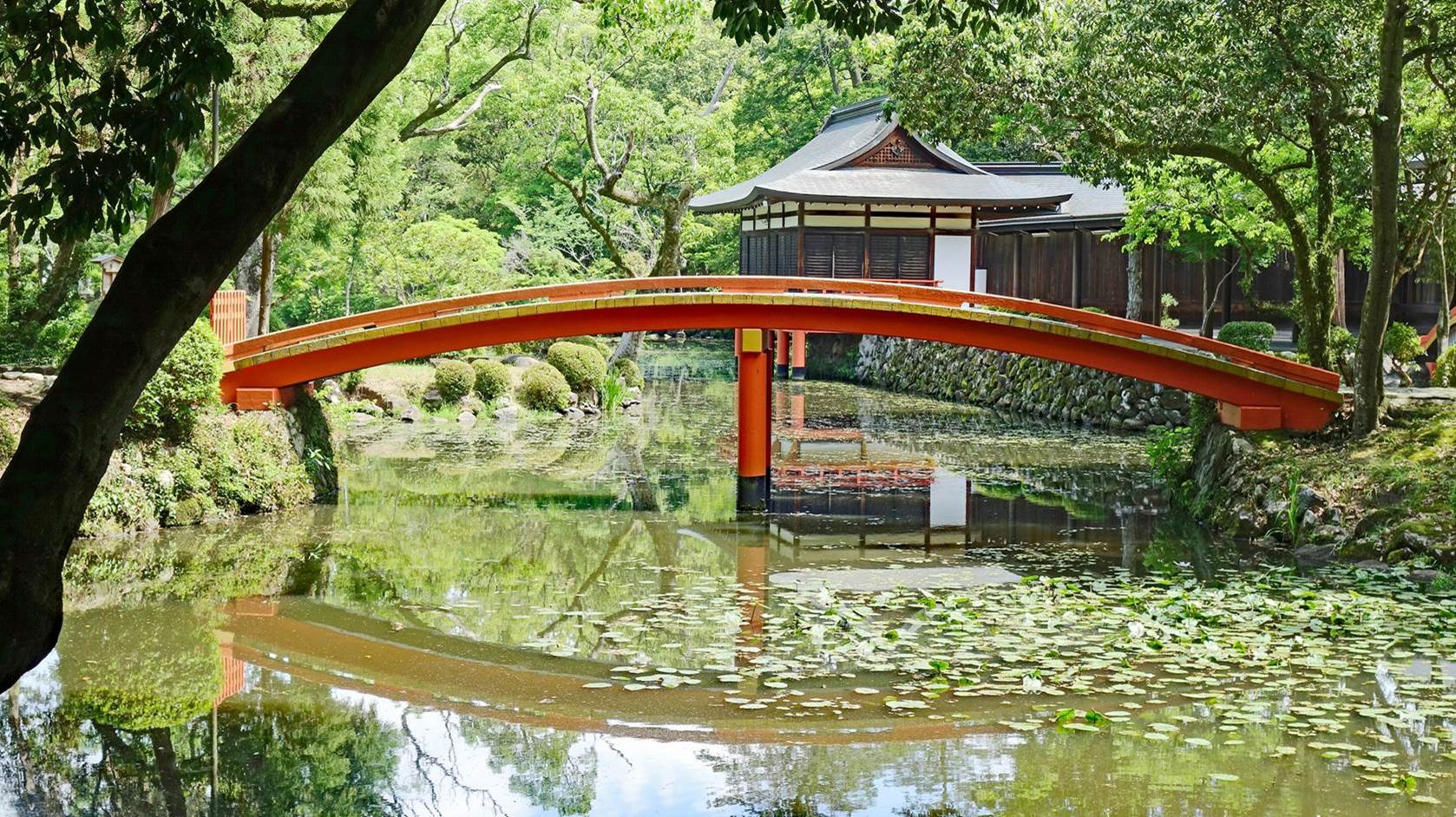
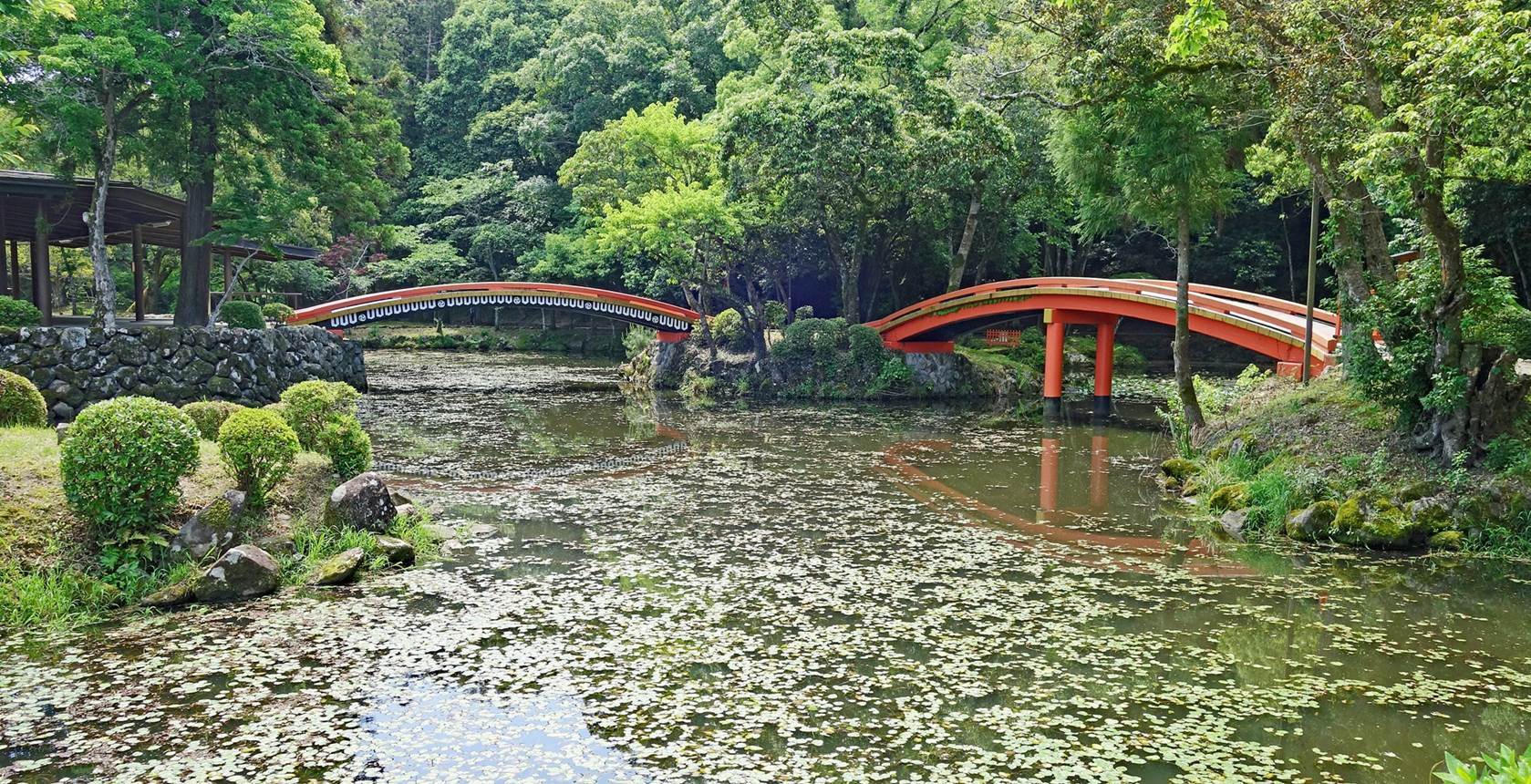
View of the
Noh stage (building with a red balustrade) built on an islet in the pond.
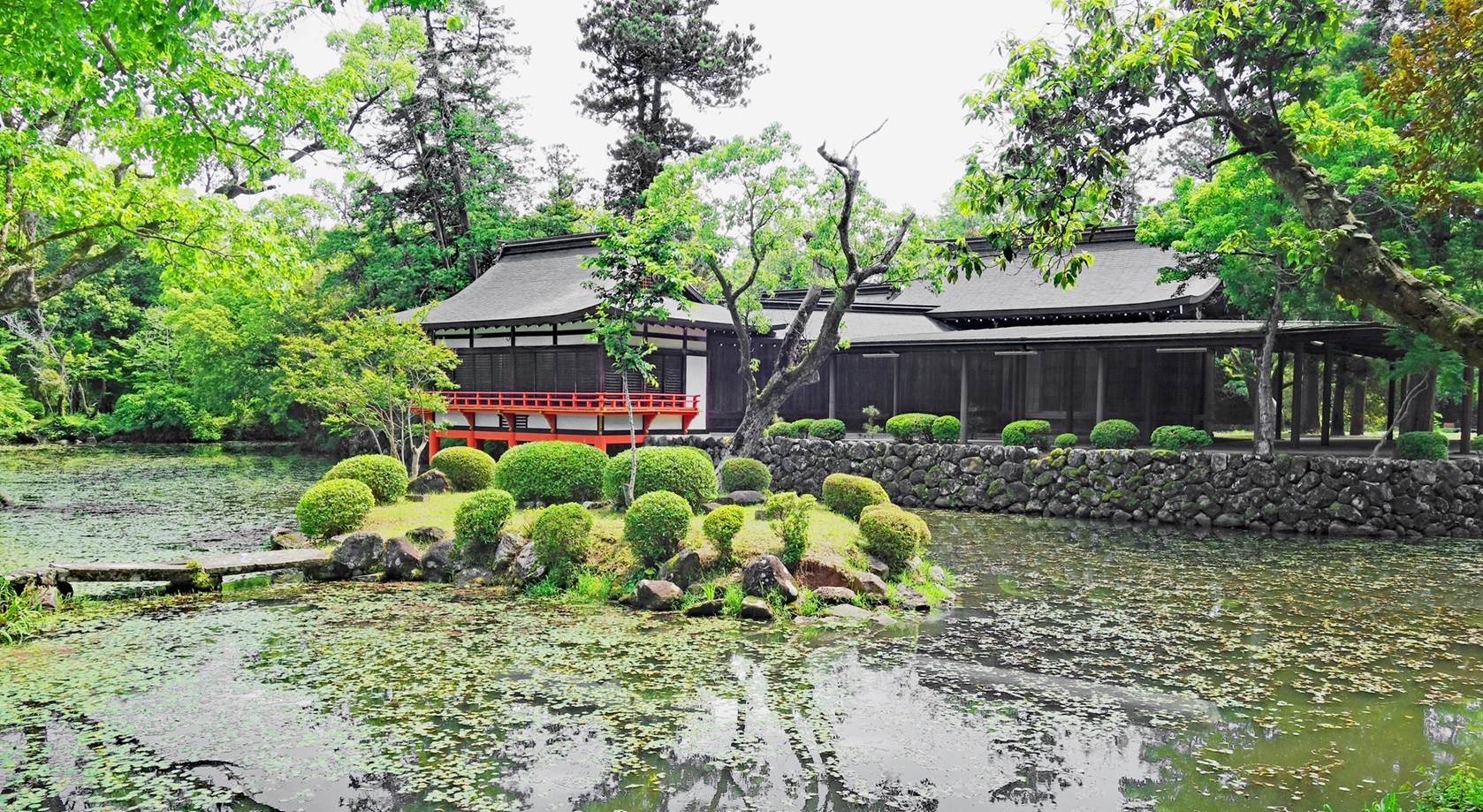
Giant stone lanterns
and torii at the entrance of the O-o and Go-o shrines, located on the west side
of the Usa Jingu compound.
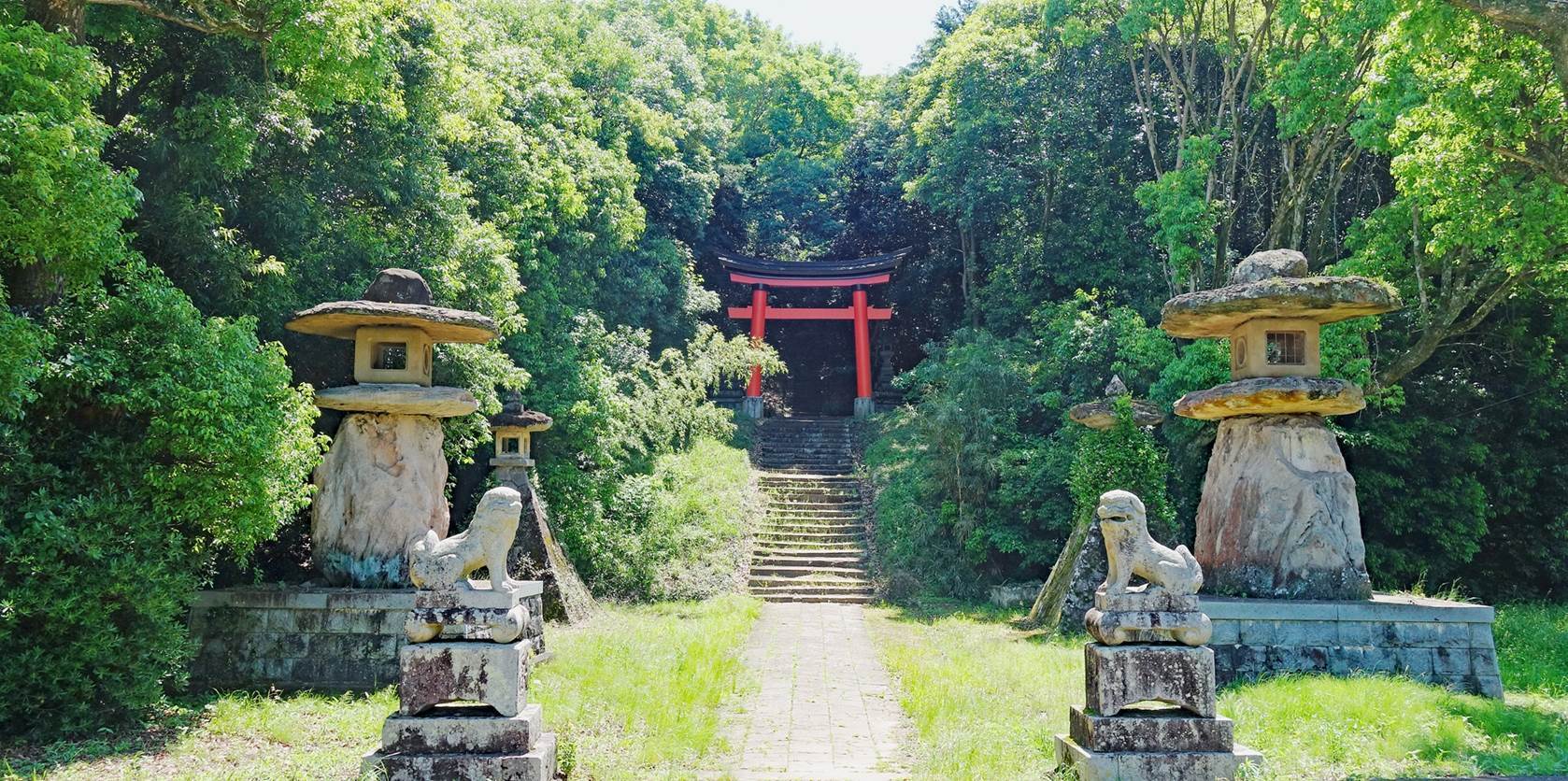
Nakatsu
Nakatsu is well-known across Japan as the home town of Fukuzawa Yukichi (1835-1901).
Born into a samurai family of the Okudaira Clan of the Nakatsu Domain, Fukuzawa
Yukichi became a famous educator, philosopher and writer, and was the founder
of the Keio University. Today he is considered one of the most influential
people who helped Japan modernize into the country it is today. His face
appears on the 10,000-yen banknote.
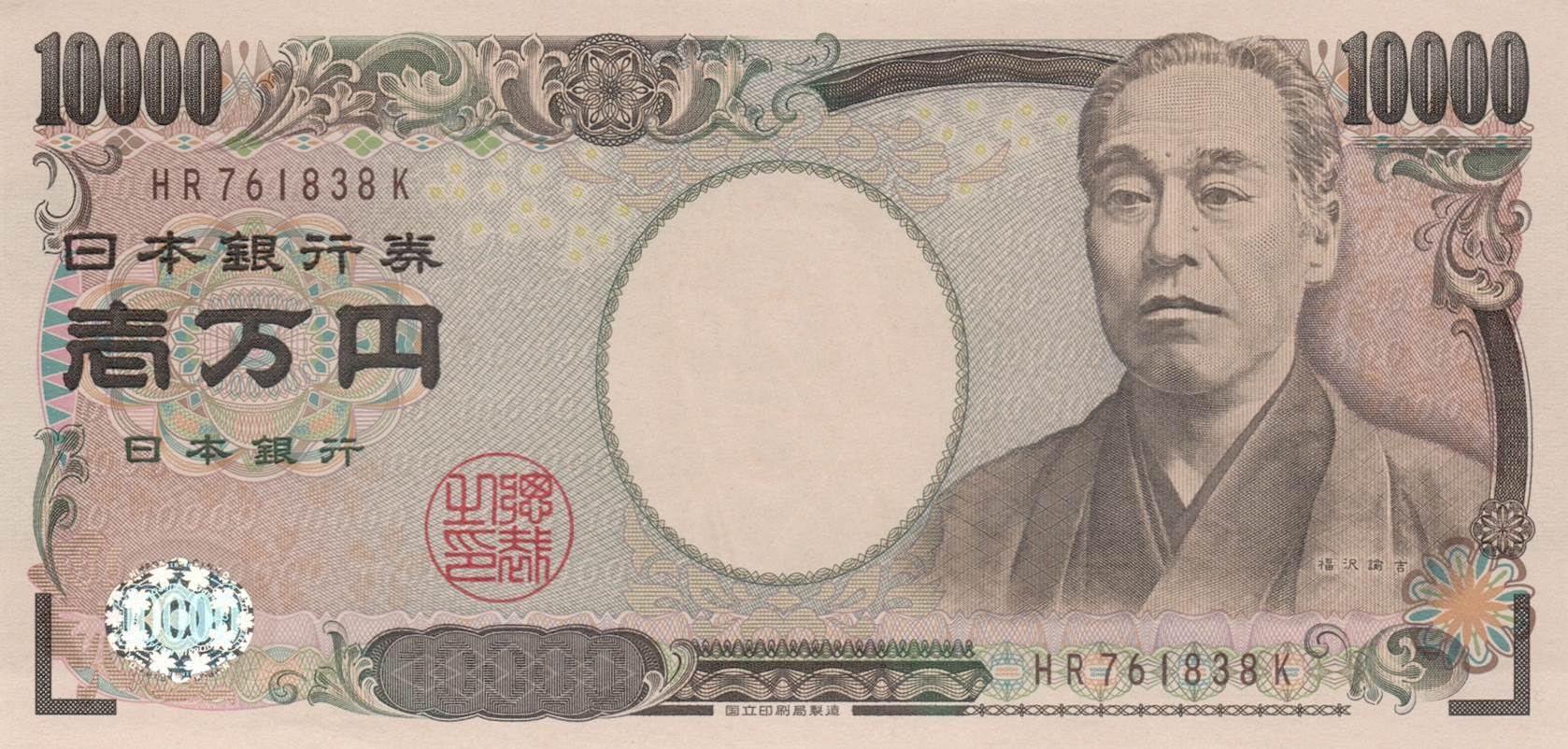
Former residence of Fukuzawa Yukichi.
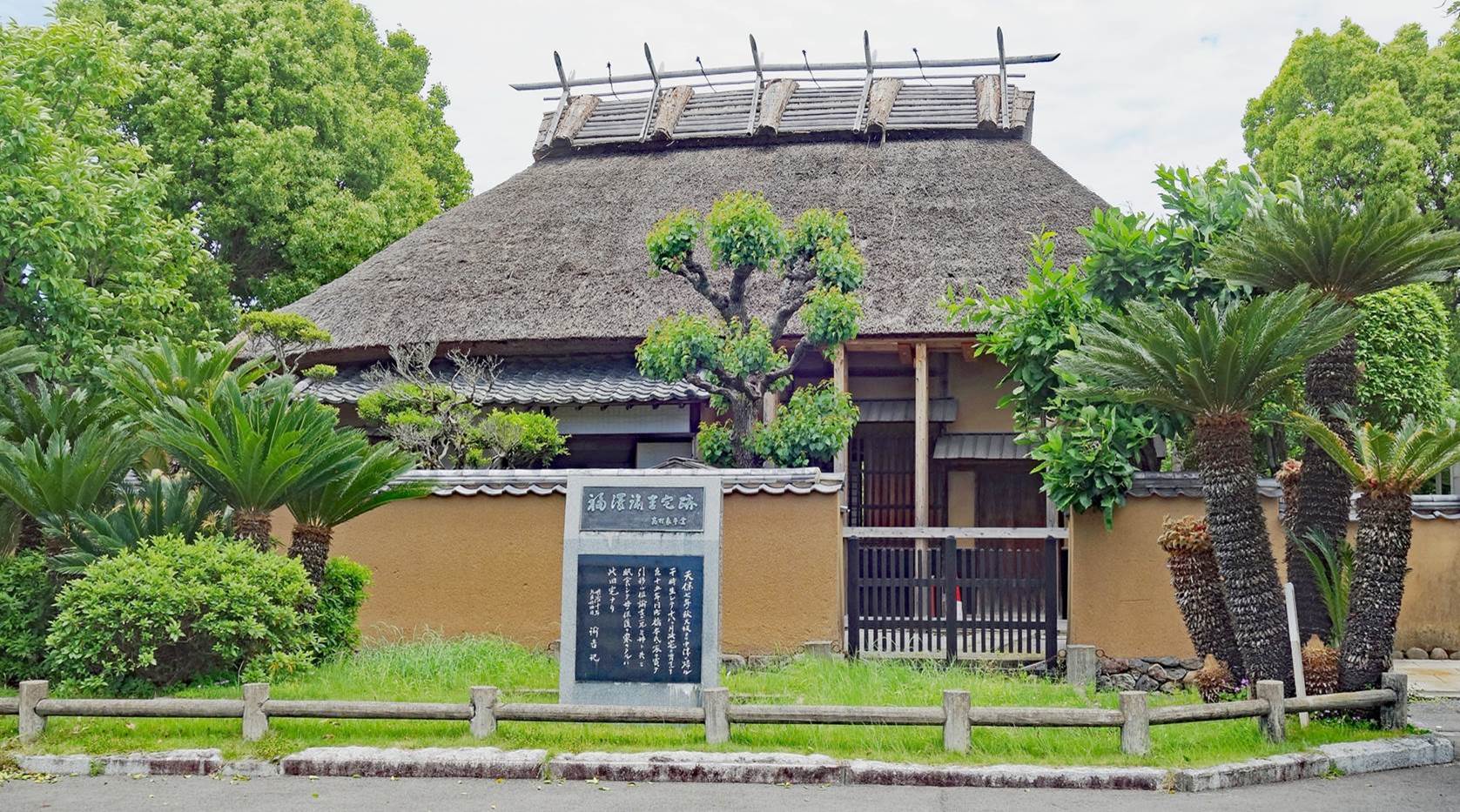
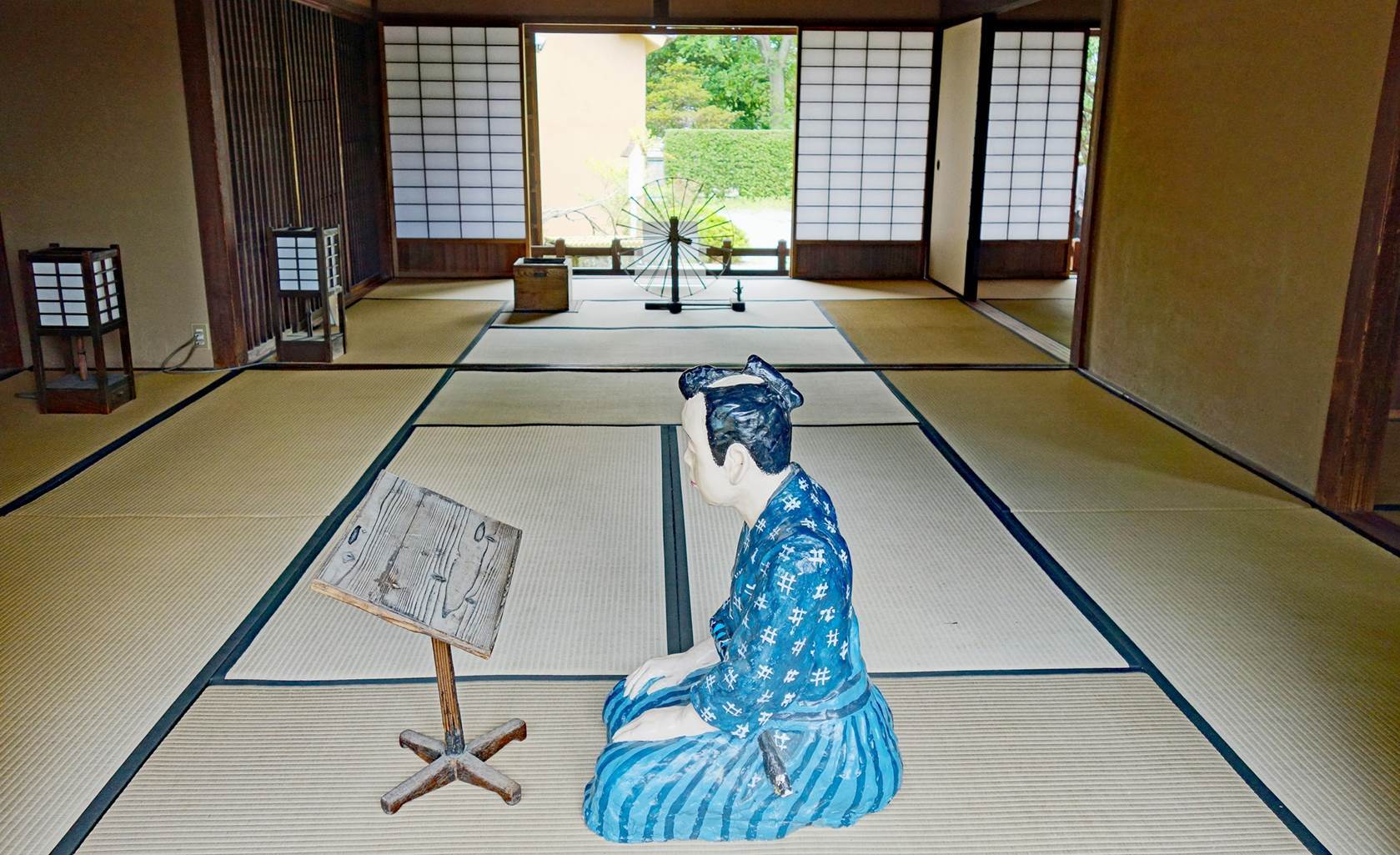
Views of the castle, built next to the Nakatsu
river. (The original castle was built in the late 16th century. Abandoned after
the Meiji restoration, it was destroyed in a fire in 1877 during the Satsuma
rebellion, a samurai rebellion led by Saigo Takamori
against the Meiji government. The present castle, a 5-story keep, was built in
1964 by descendants of the Okudaira clan that ruled Nakatsu for nine
generations from 1717 until the Meiji restoration in 1871. It is said that no
images of the original castle existed, so that the new castle was modelled on
the keep of the Hagi castle. But when I visited Hagi in 2019, the only remains
of the Hagi castle were some of its walls. So, I assume that images of the Hagi
castle were used to build the new Nakatsu castle. Anyway, the new Nakatsu
castle is beautiful.)
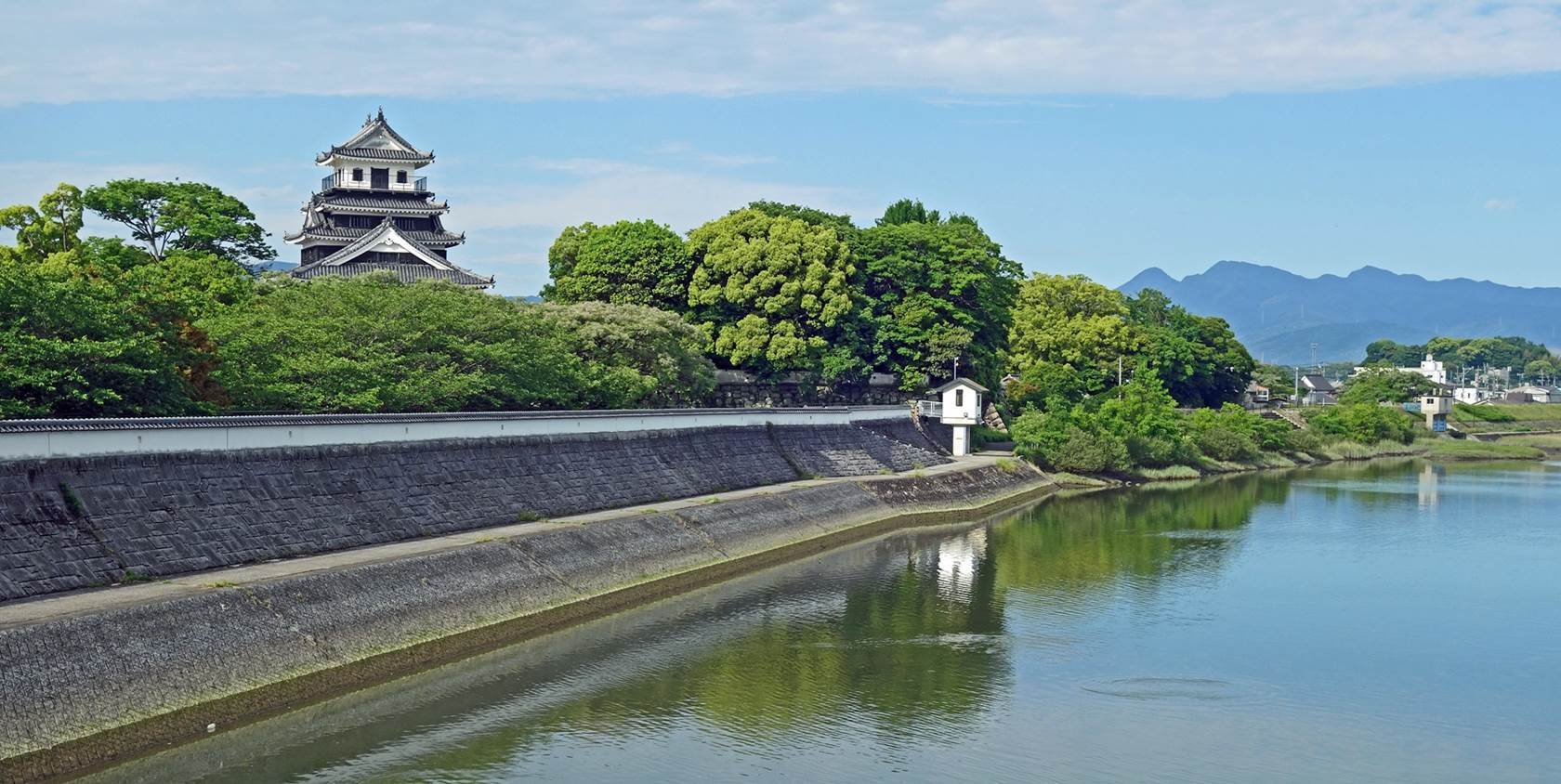
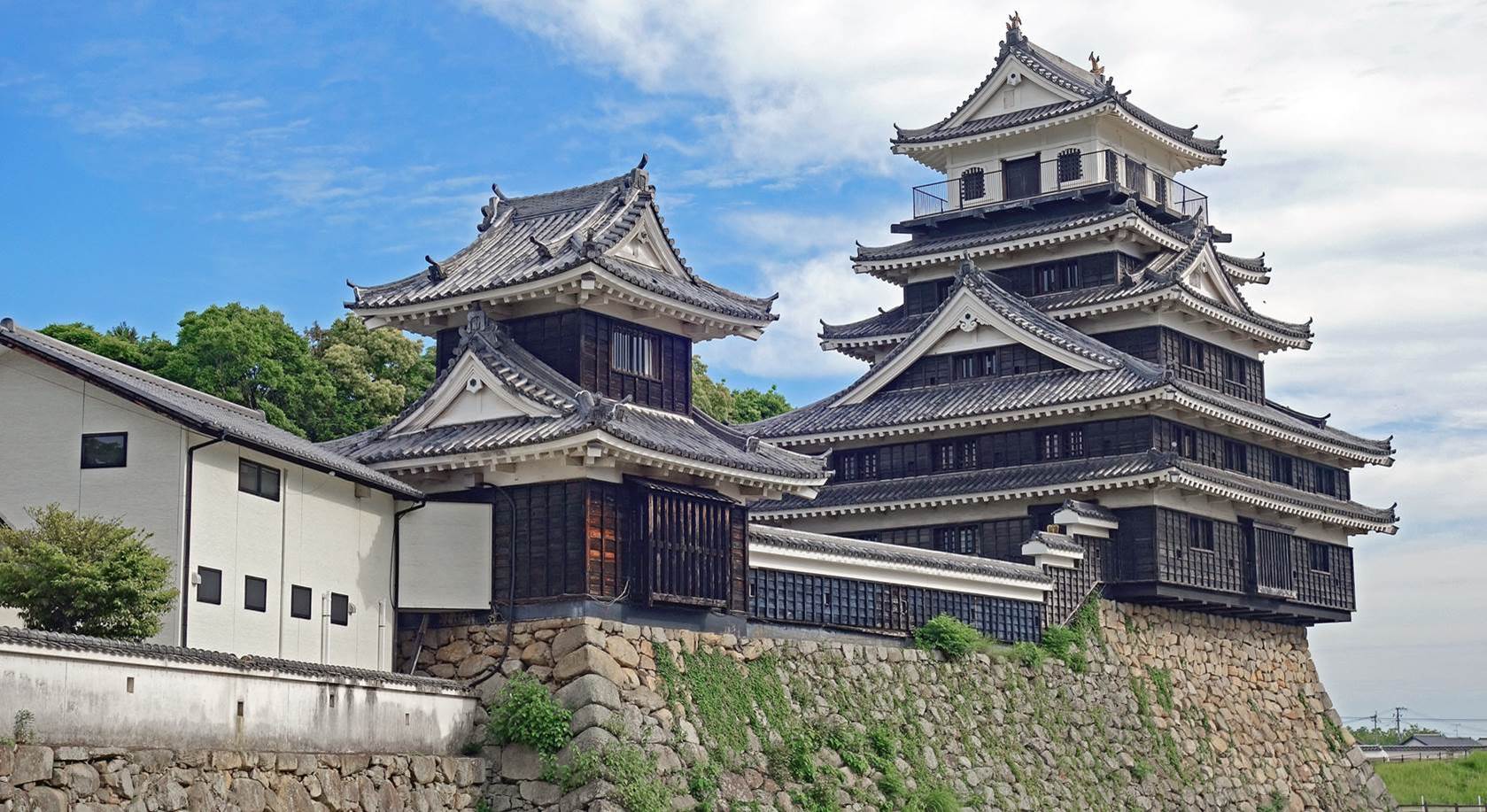
|
|
|
|
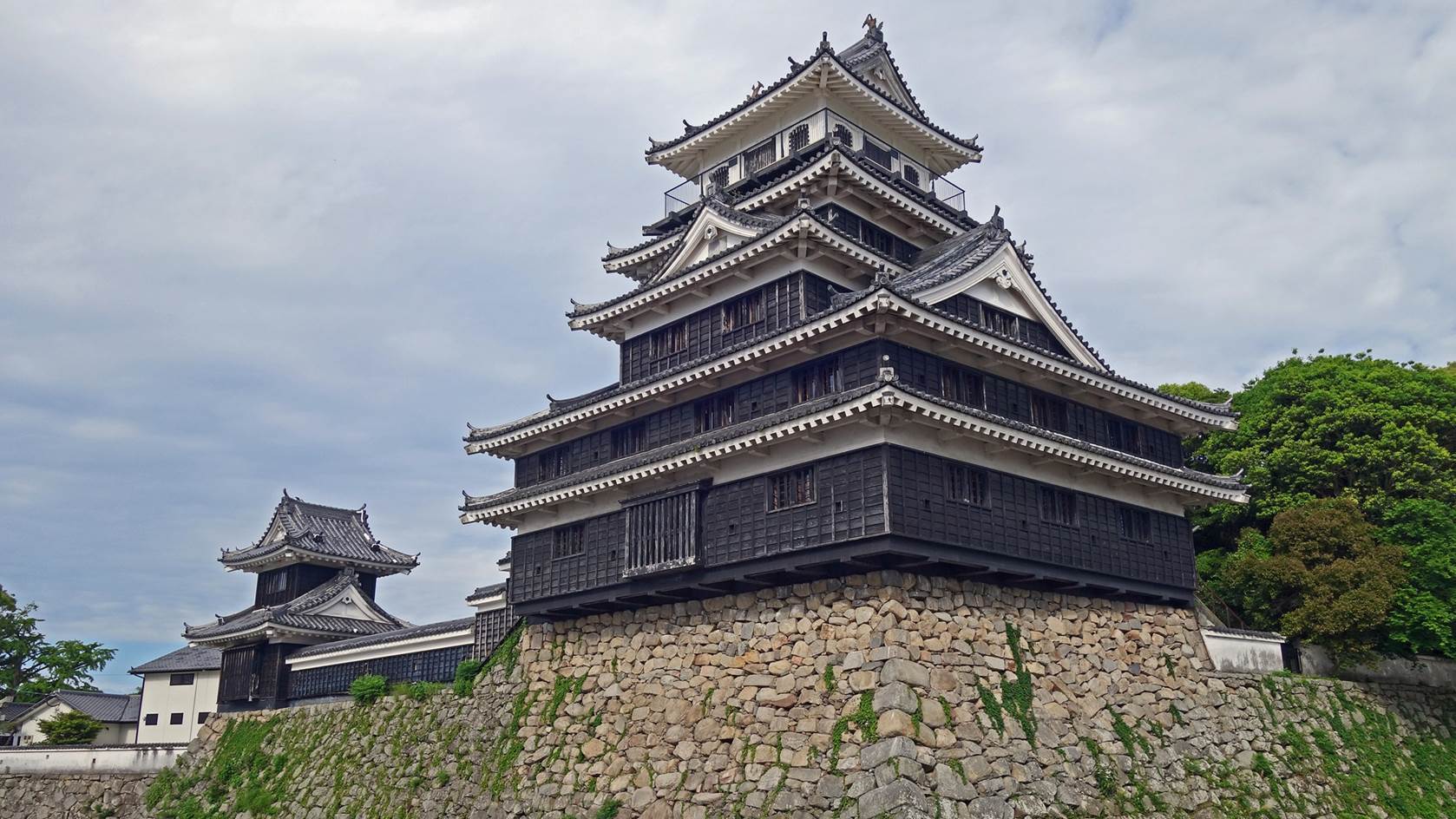
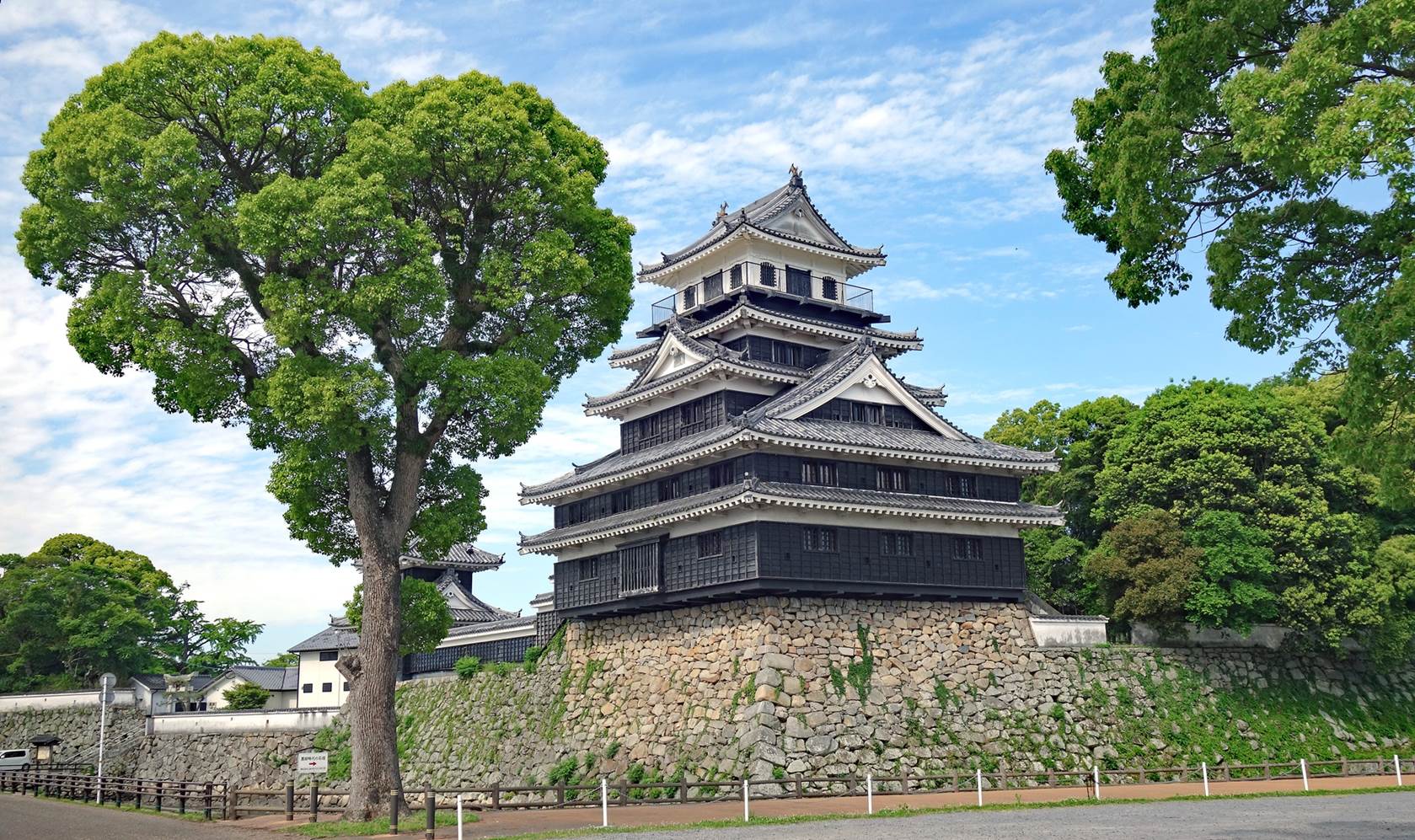
Samurai armors on display in the castle.
|
|
|
|
View over roofs of Nakatsu houses from the top floor
of the castle.
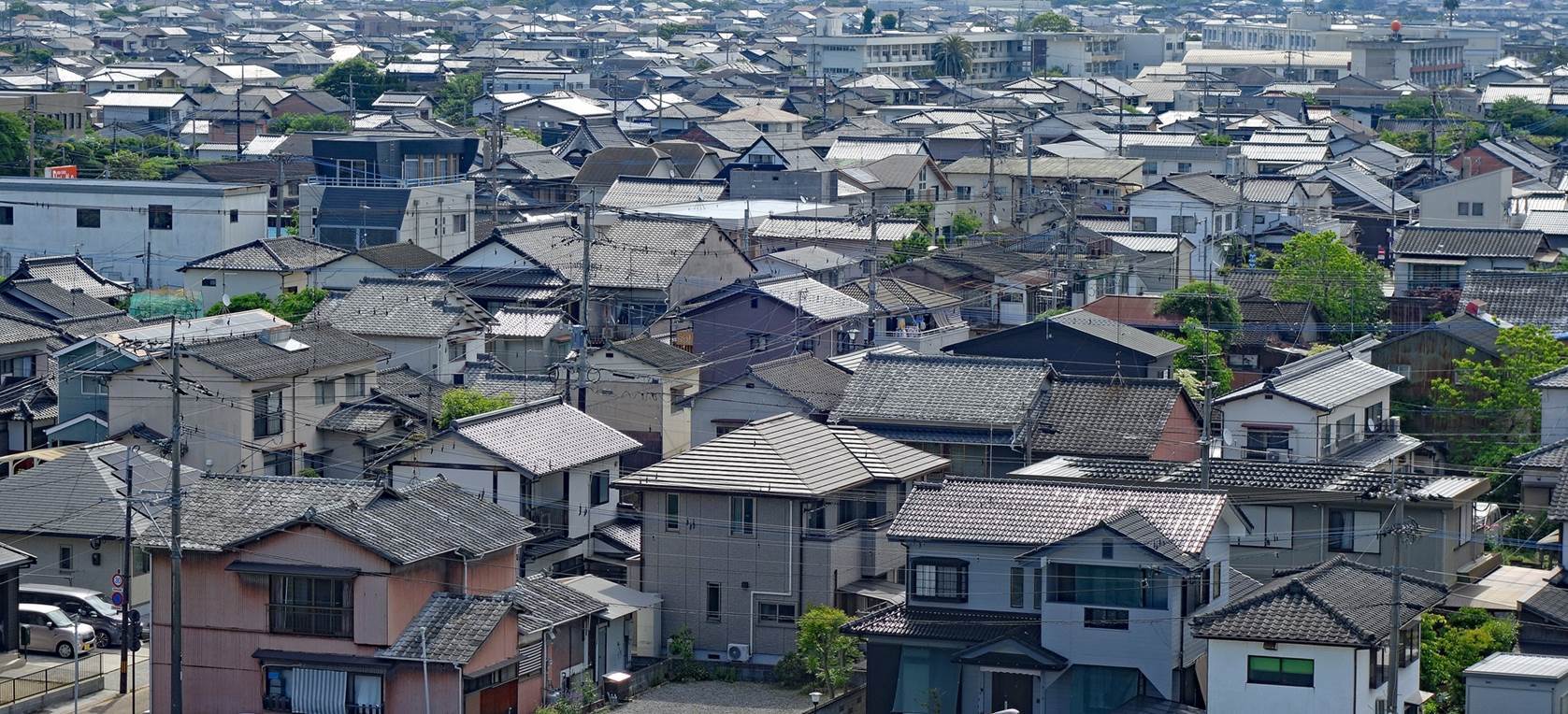
The area around the castle is dotted with several
small Shinto shrines. Okudaira-jinja, shown below,
is the closest to the castle and also seems to be the most important.
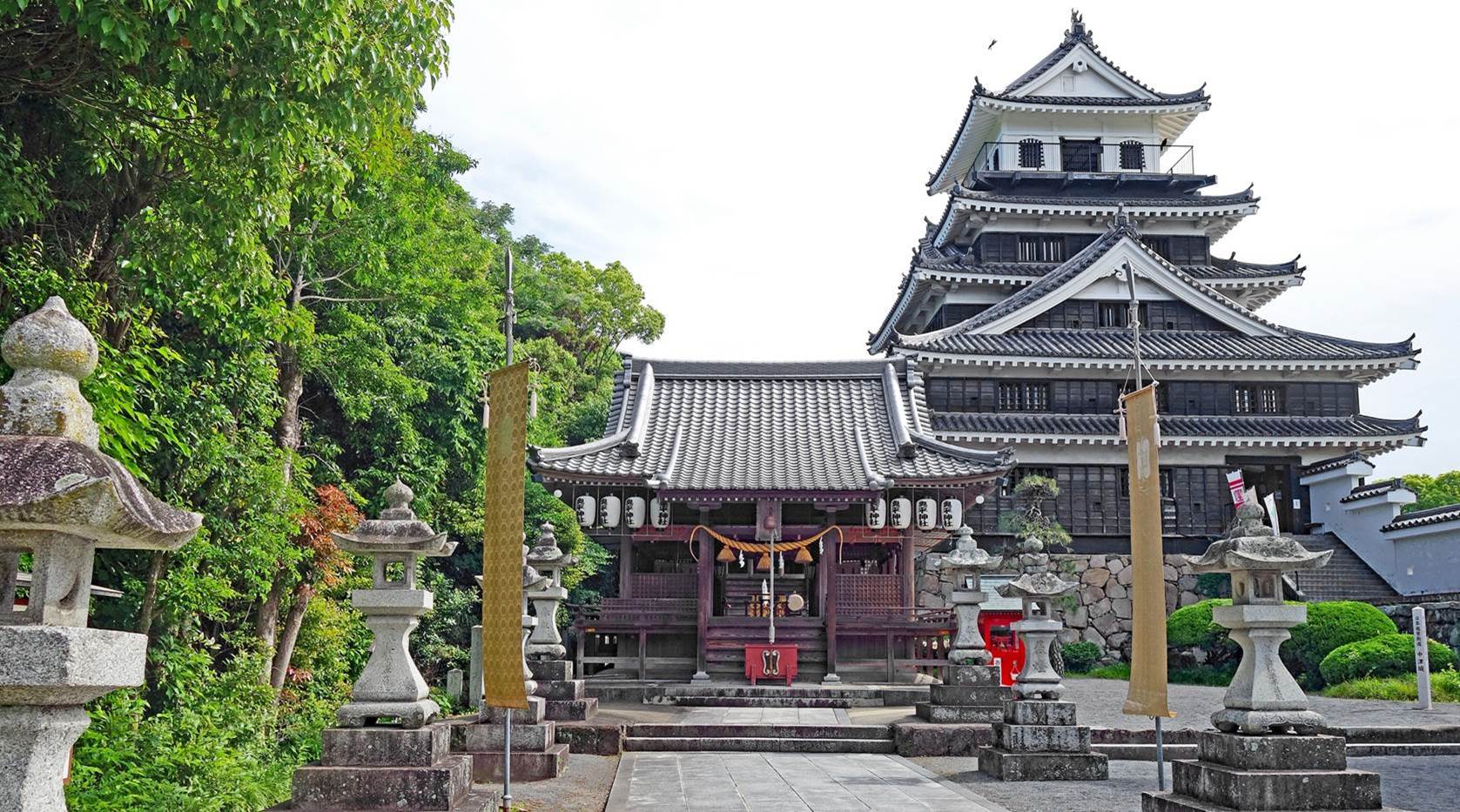
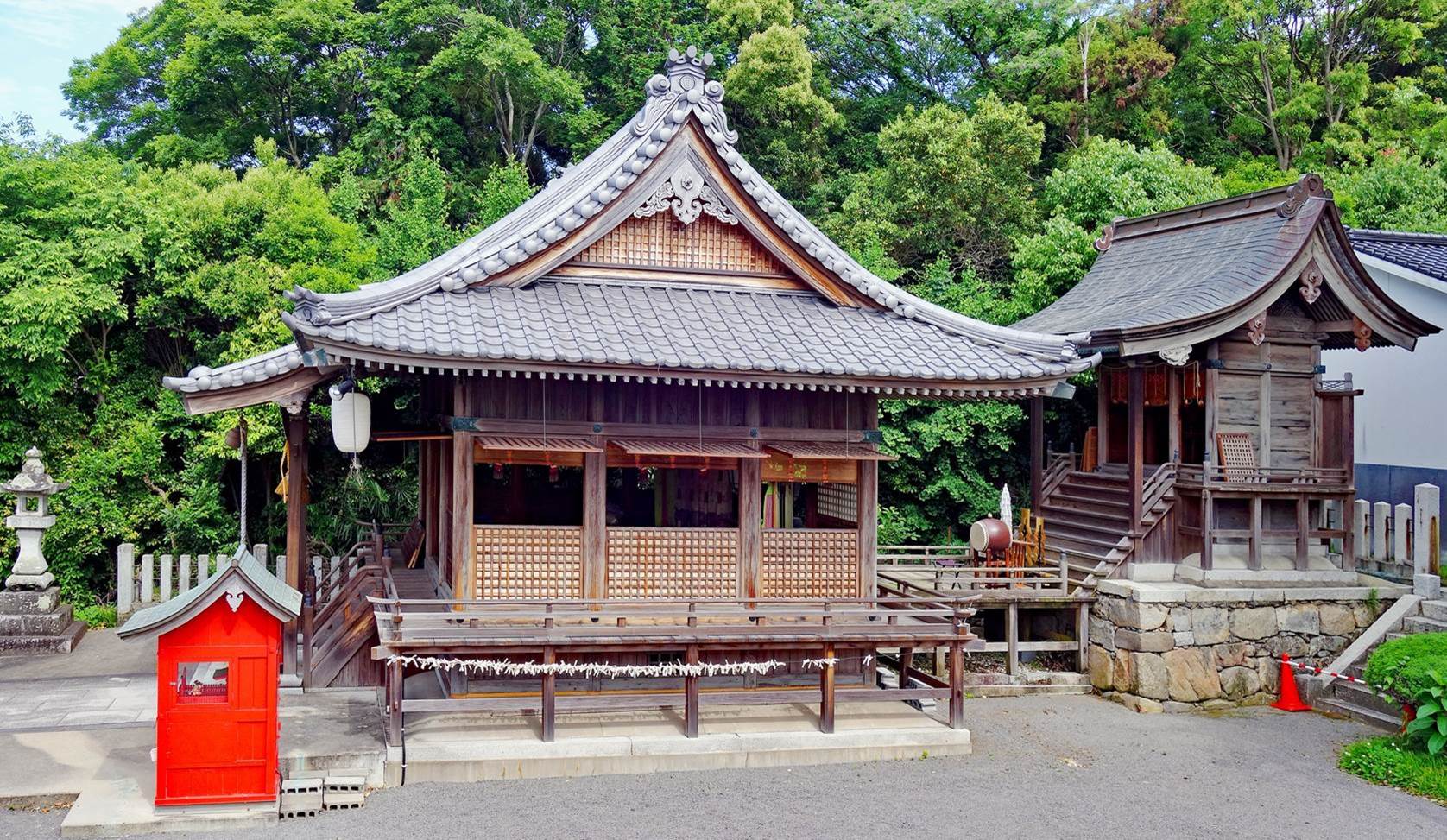
Priests bringing food to the kami of
Okudaira-jinja in the morning.
|
|
|
|
Morning prayer in another Shinto shrine near the
castle.
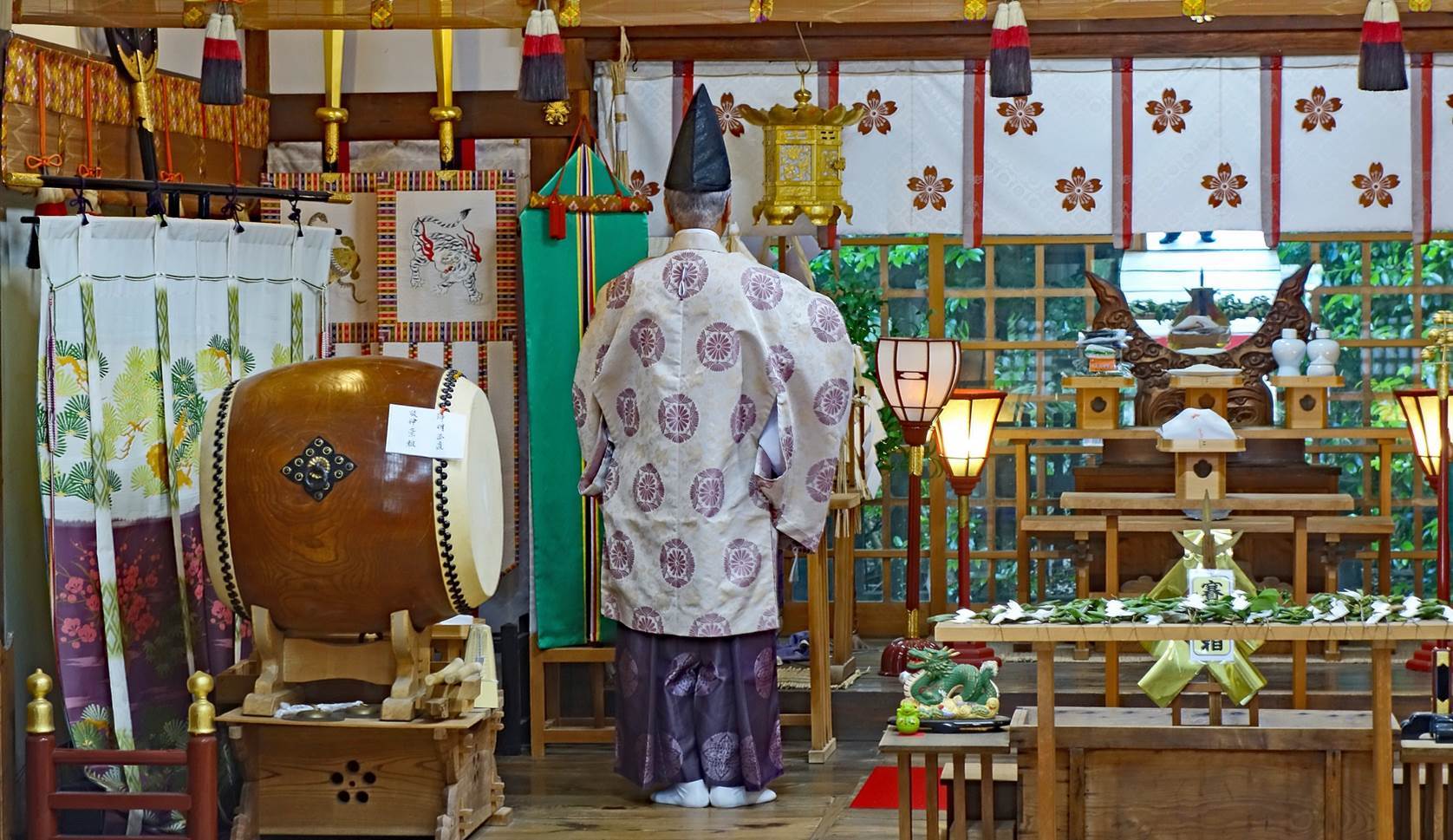
Tiny folk shrine near the castle.
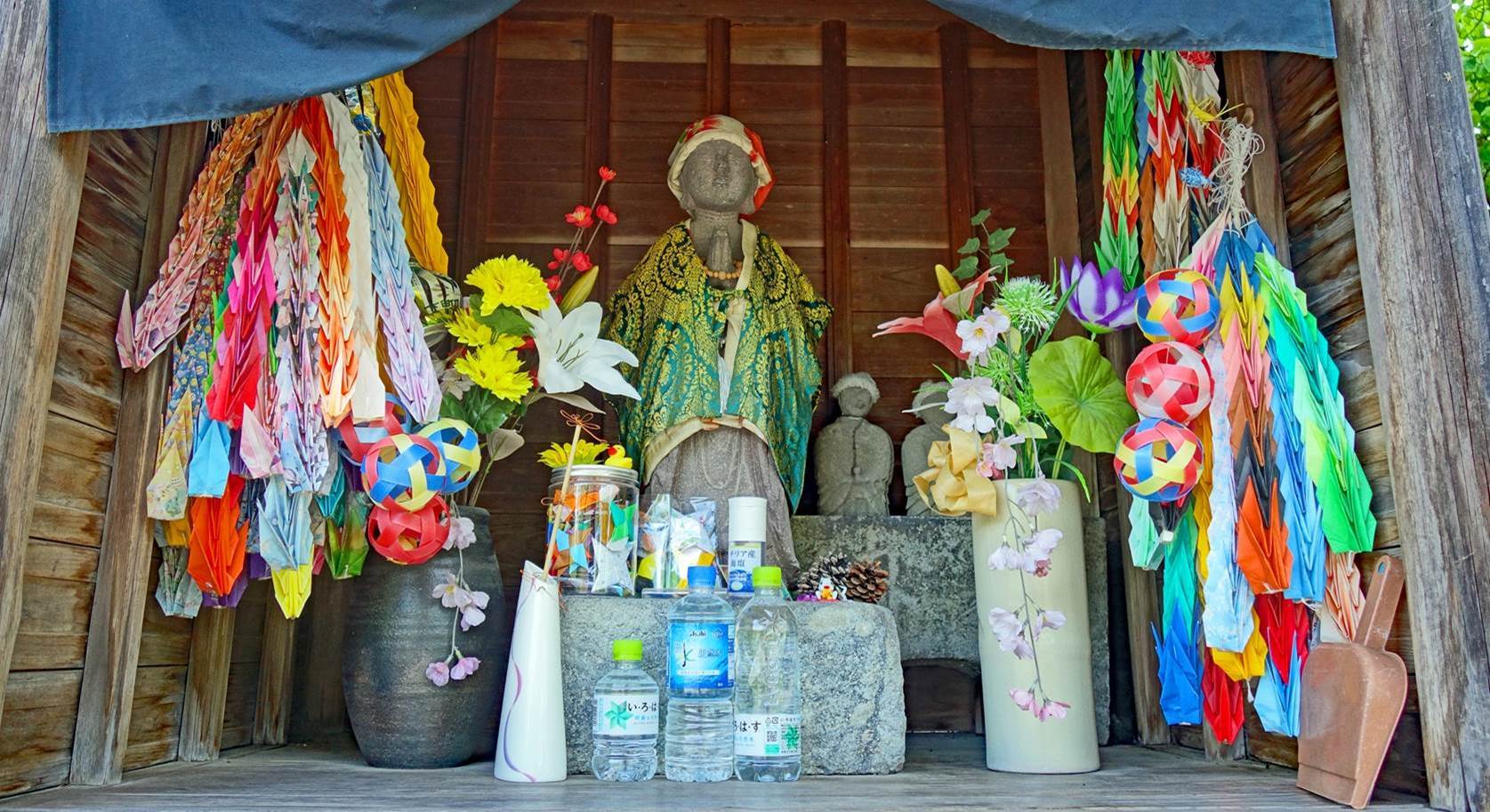
Wood sculpture in a shrine near the castle.
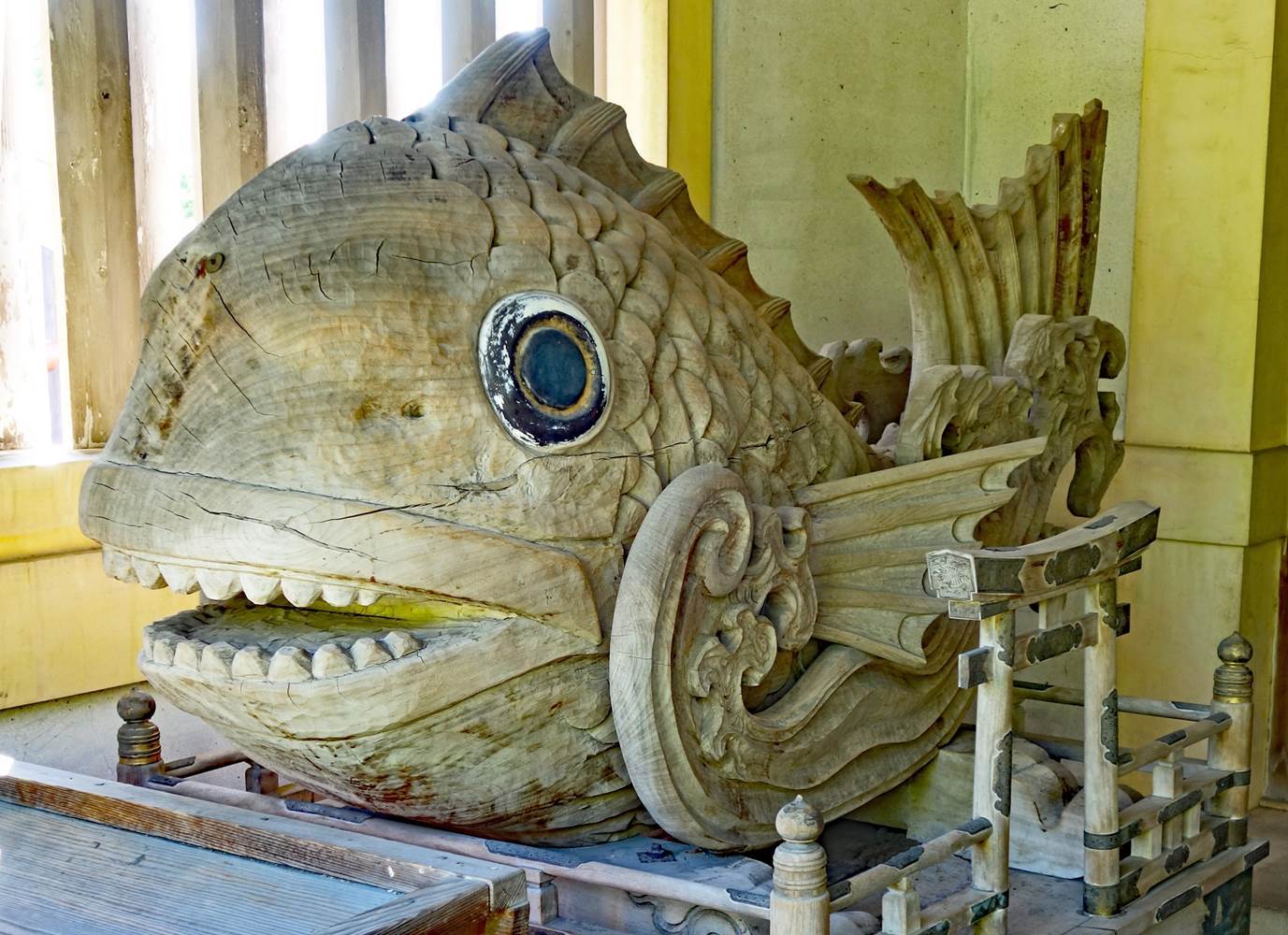
Kuranashihama-jinja, a Shinto shrine located north of the castle.
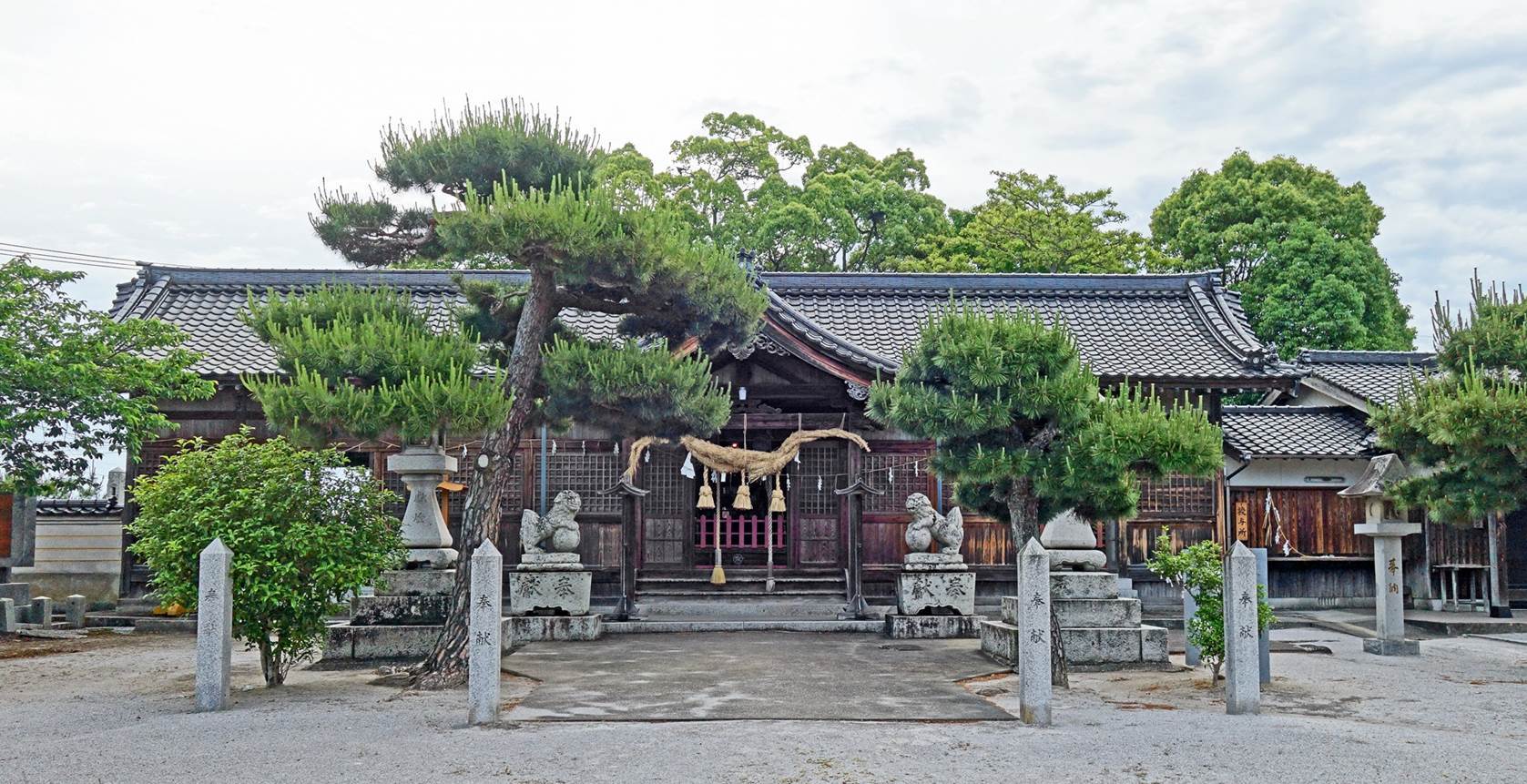
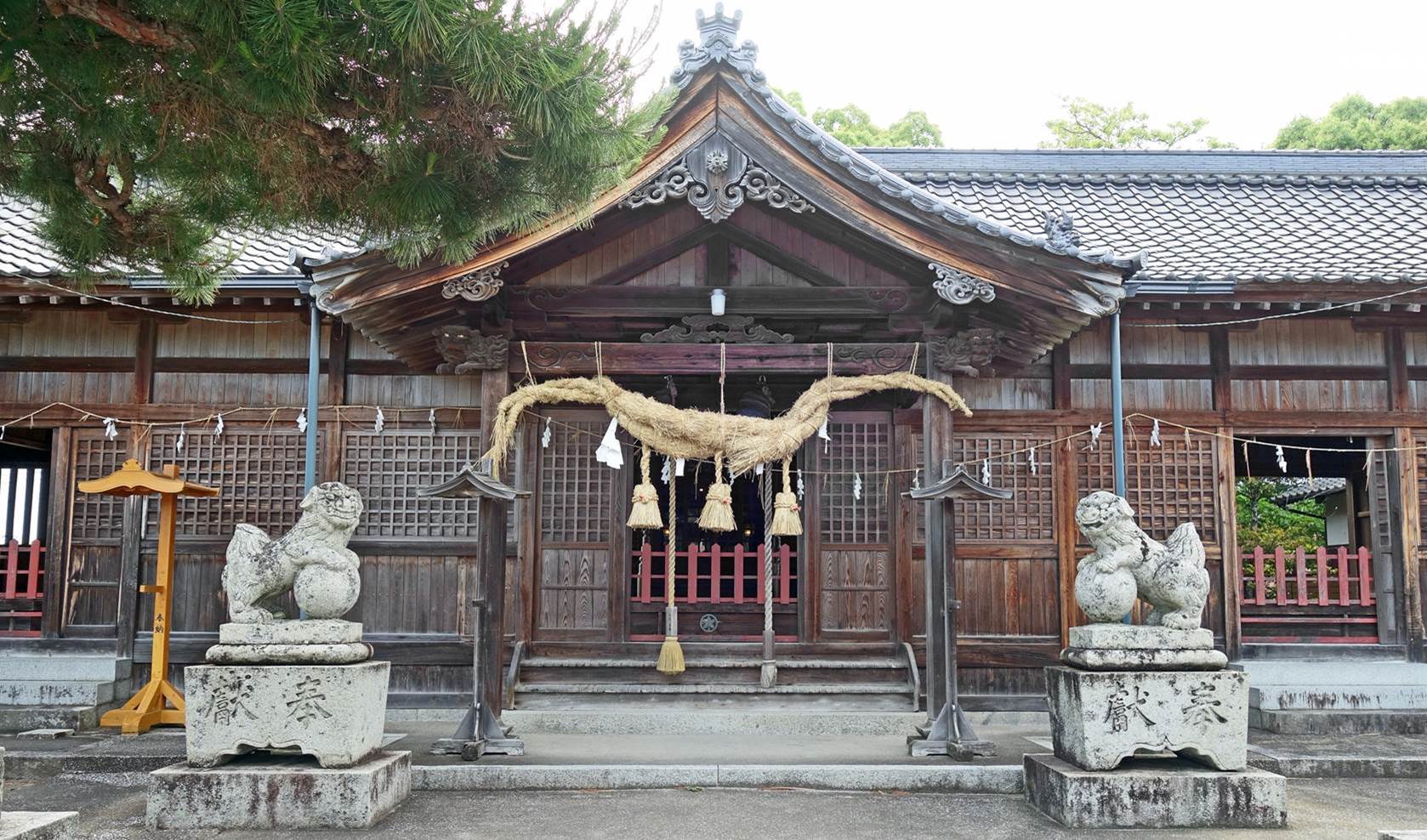
|
|
|
Shimada-jinja, located in the central part of Nakatsu.
Two of the stones in front of the shrine suggest that it celebrates fertility.
|
|
|
The Teramachi street in
central Nakatsu is a long series of Buddhist temples (probably more than a
dozen). Below are photos of three of them.
- Temple with a dry garden.
|
|
|
- Gogan-ji, probably the best-known temple in this
street, perhaps because it is the only one with walls painted in bright red
color.
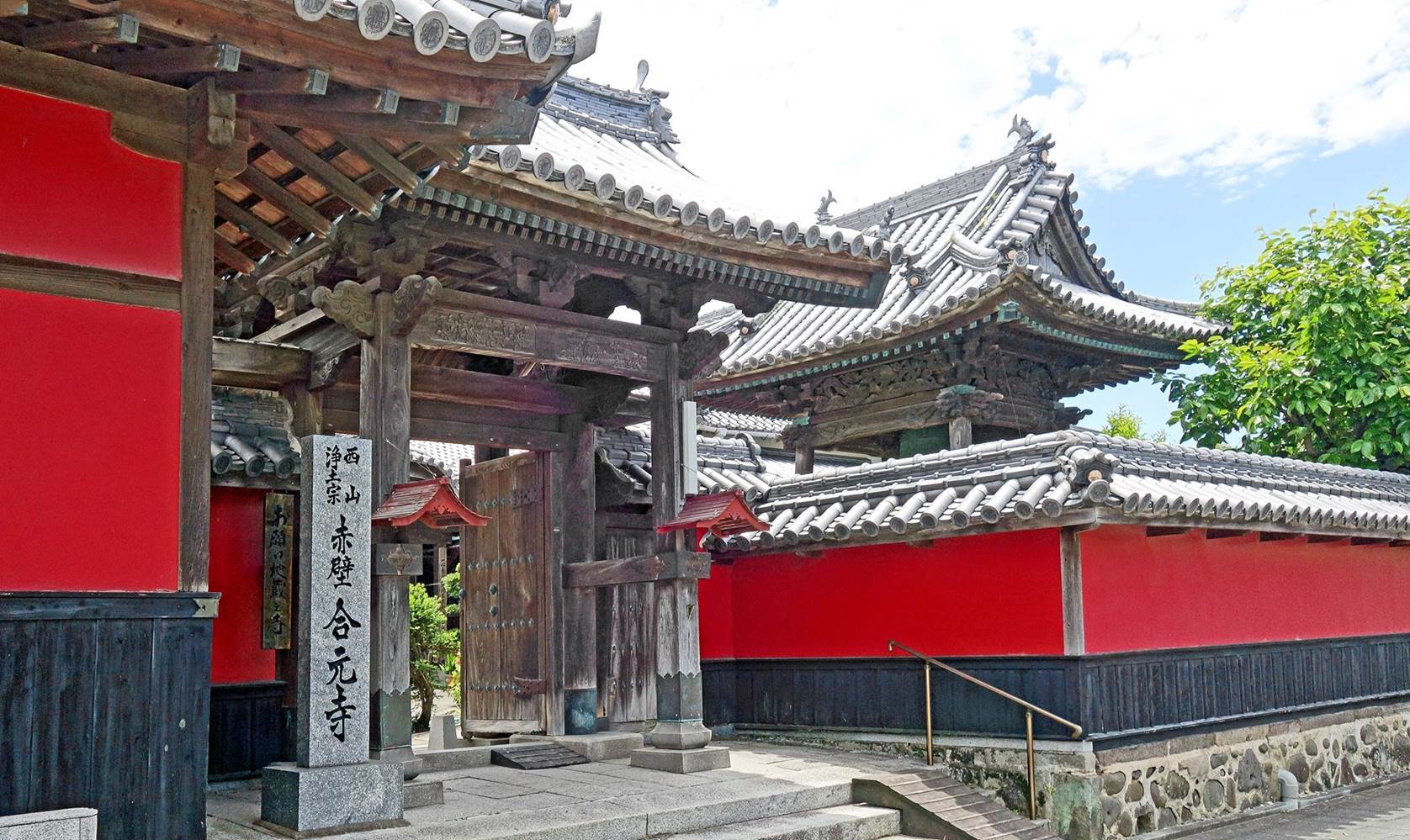
|
|
|
- Daiho-ji, a Buddhist
temple of the Nichiren sect.
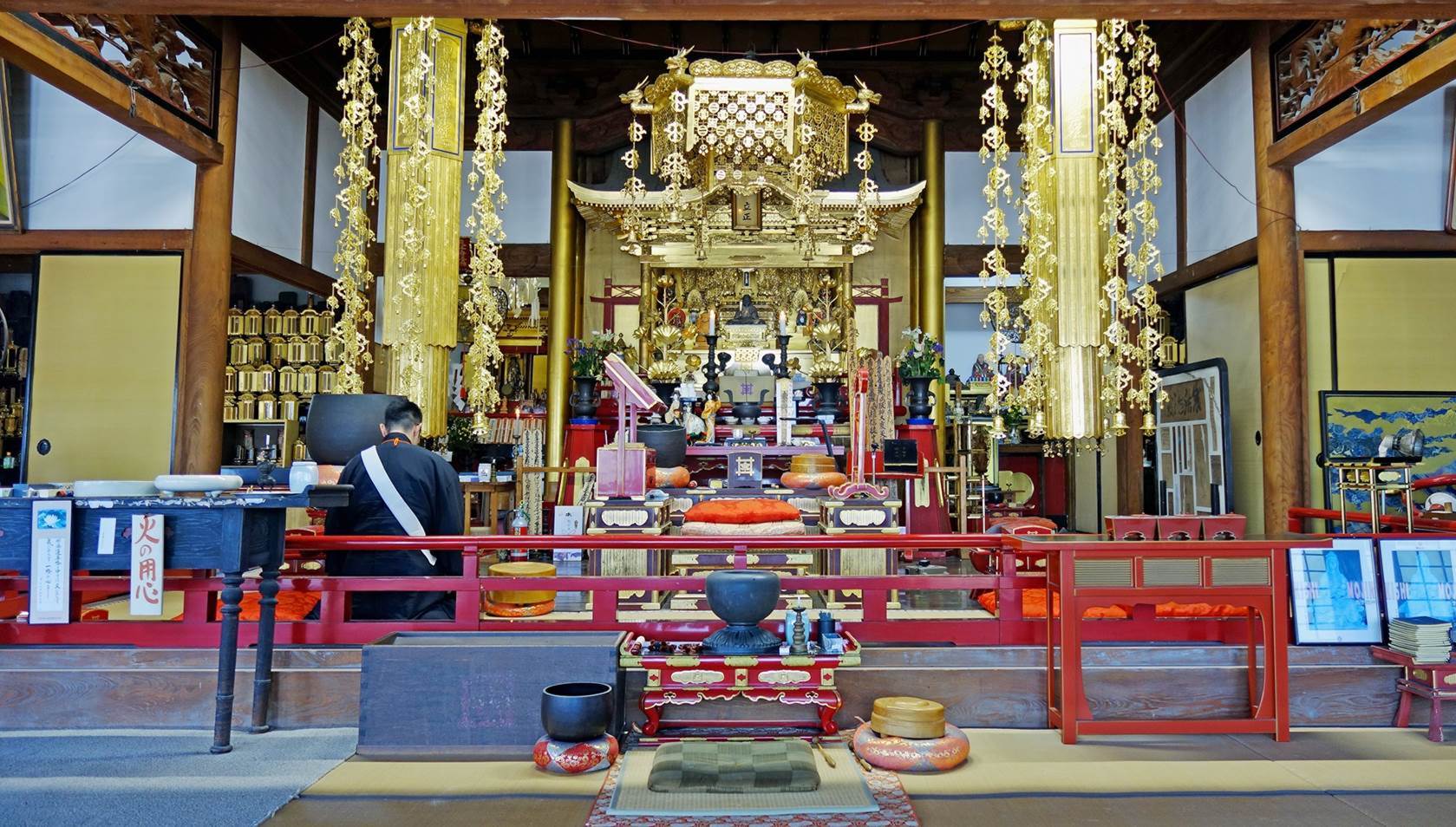
|
|
|
- Statue and painting representing Nichiren (1222-1282), the founder of the sect, in Daiho-ji.
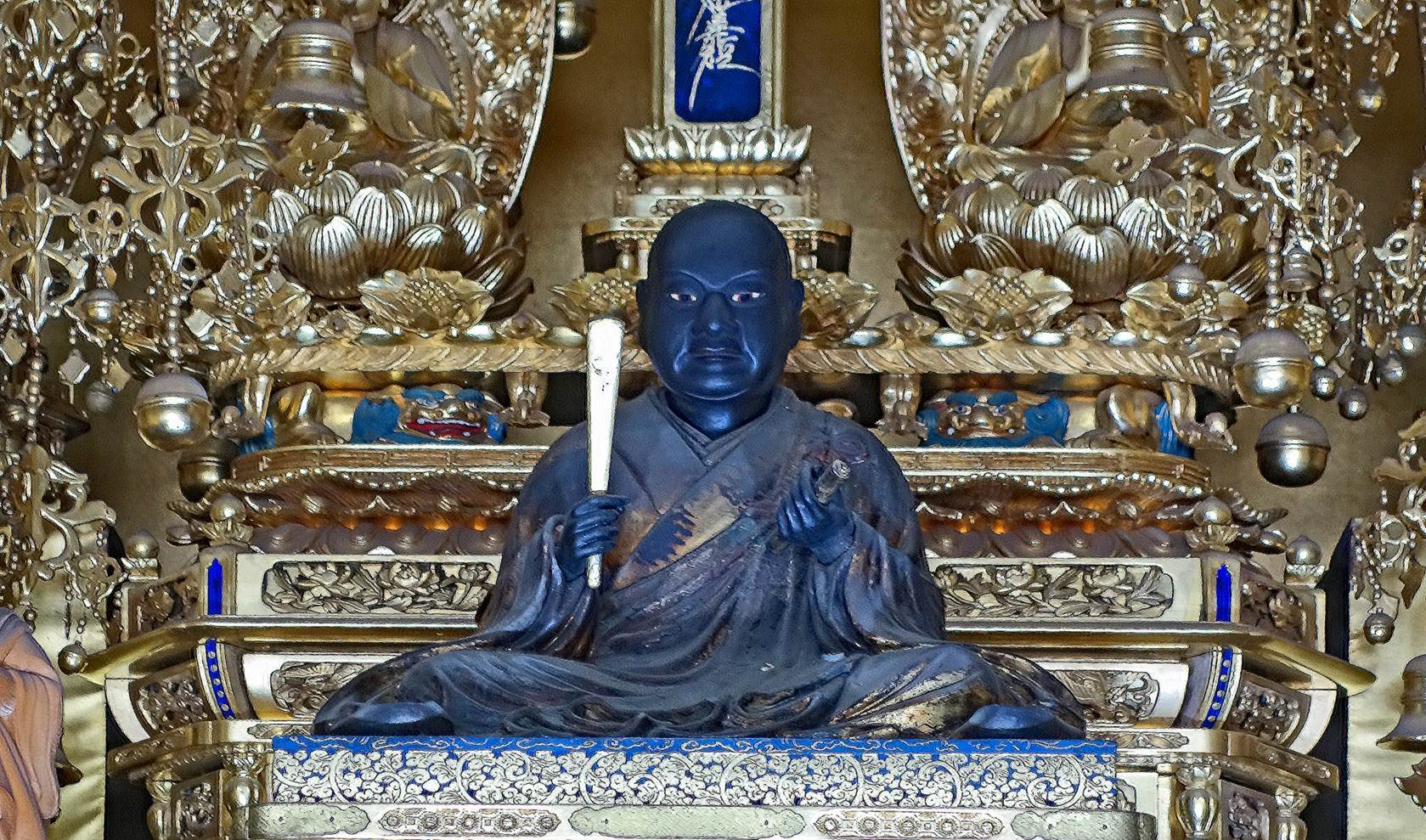
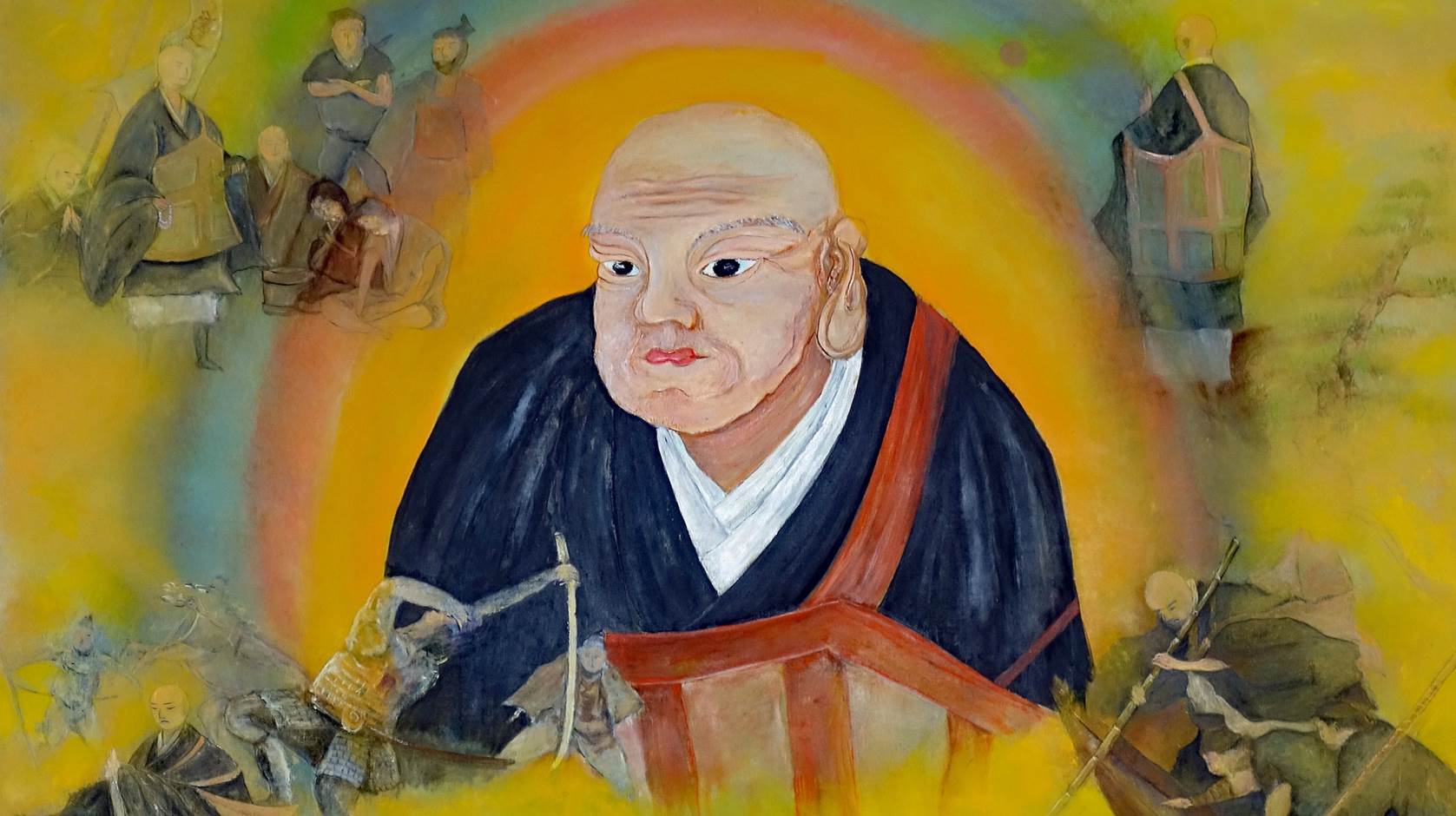
- Statue in the front yard of Daiho-ji. It
represents Kishimojin, an important figure in Nichiren Buddhism. Initially a demon, Kishimojin
later became a goddess protecting children.
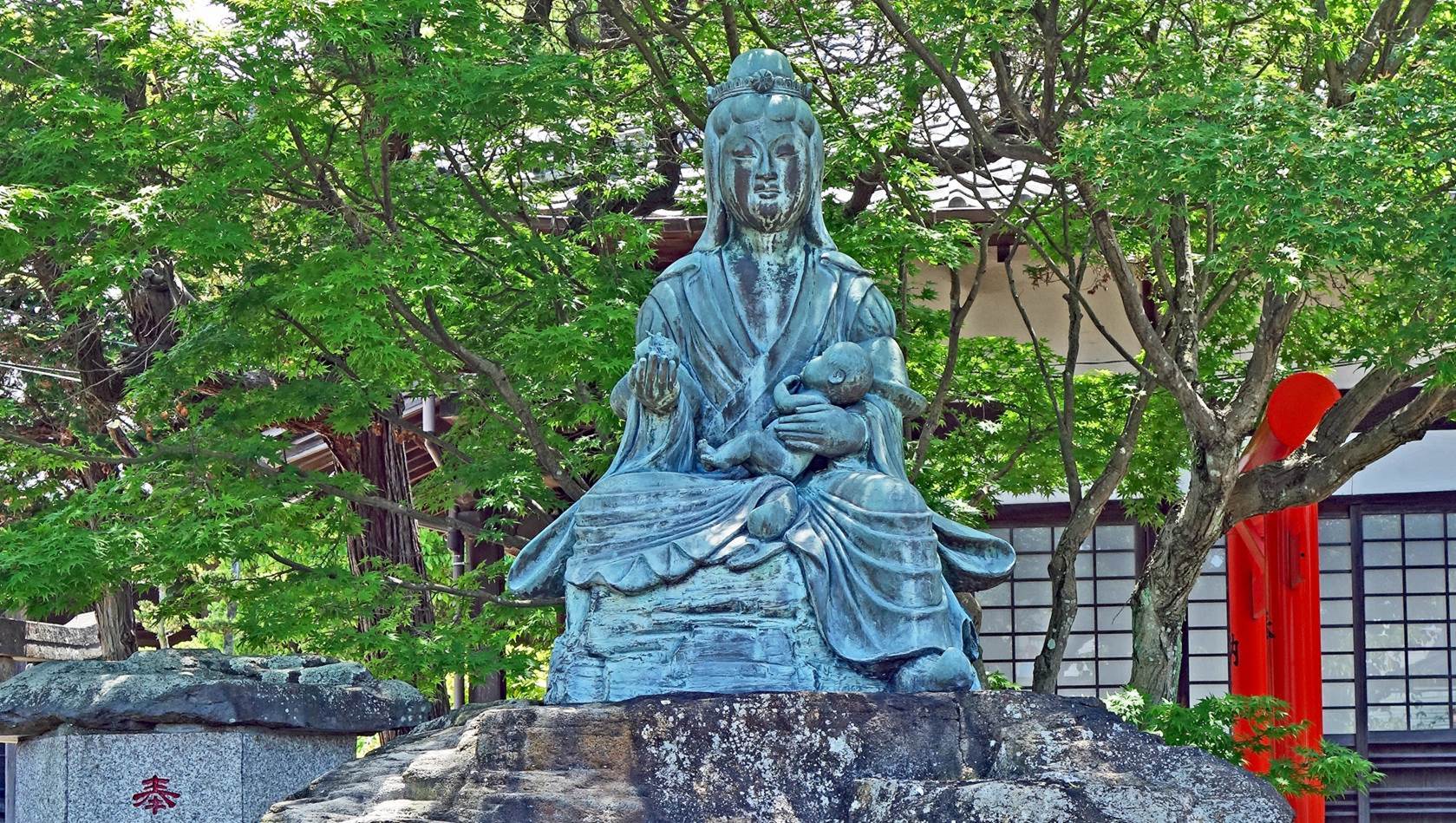
Komo-jinja, located 5km southeast of the
Nakatsu center. Founded in the 9th century, this Hachiman shrine covers a large
area next to a scenic pond, the Misumi pond.
- Alley leading to the shrine.
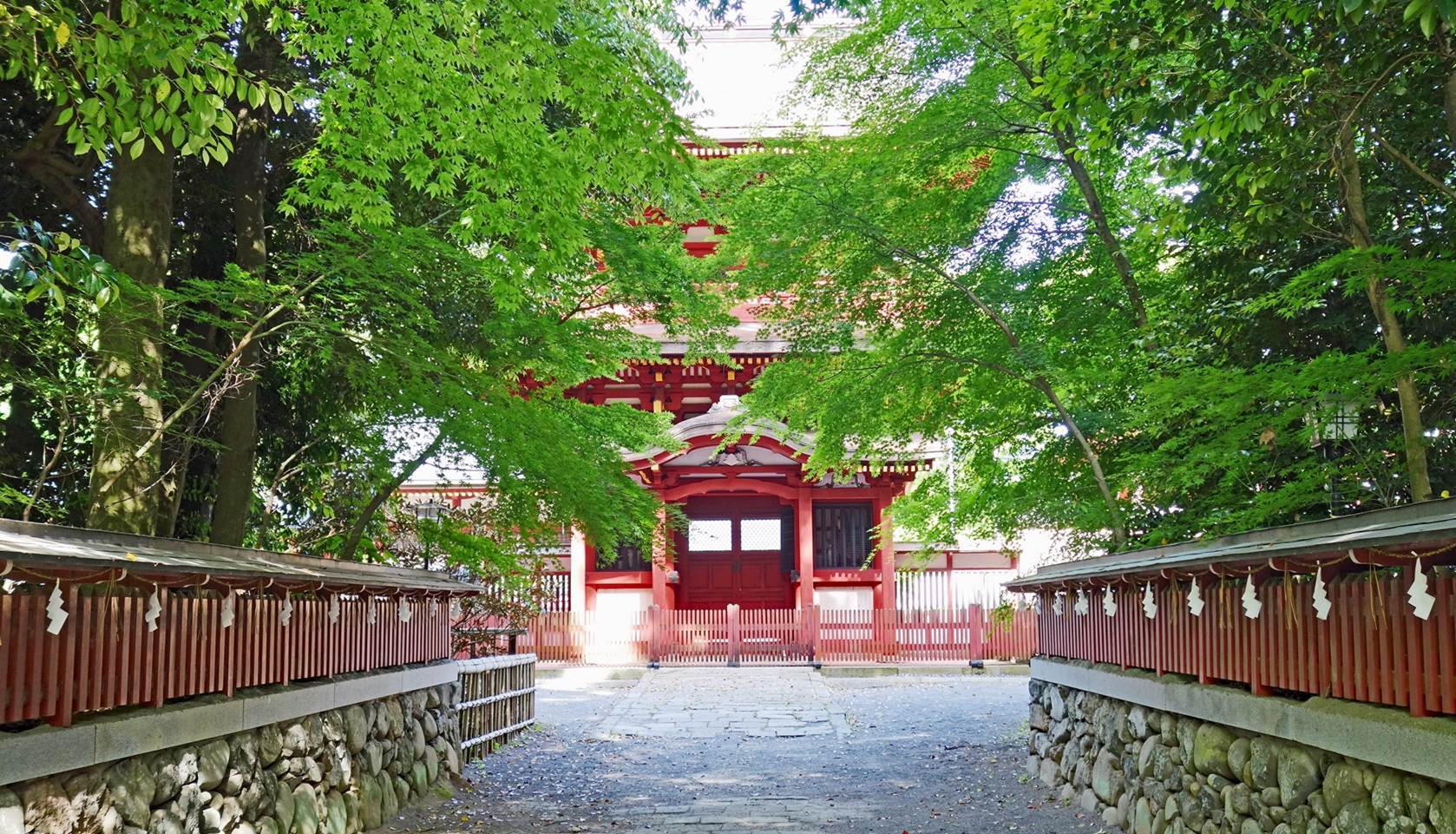
- Two-story gate built in 1622.
|
|
|
- Main buildings of the shrine.
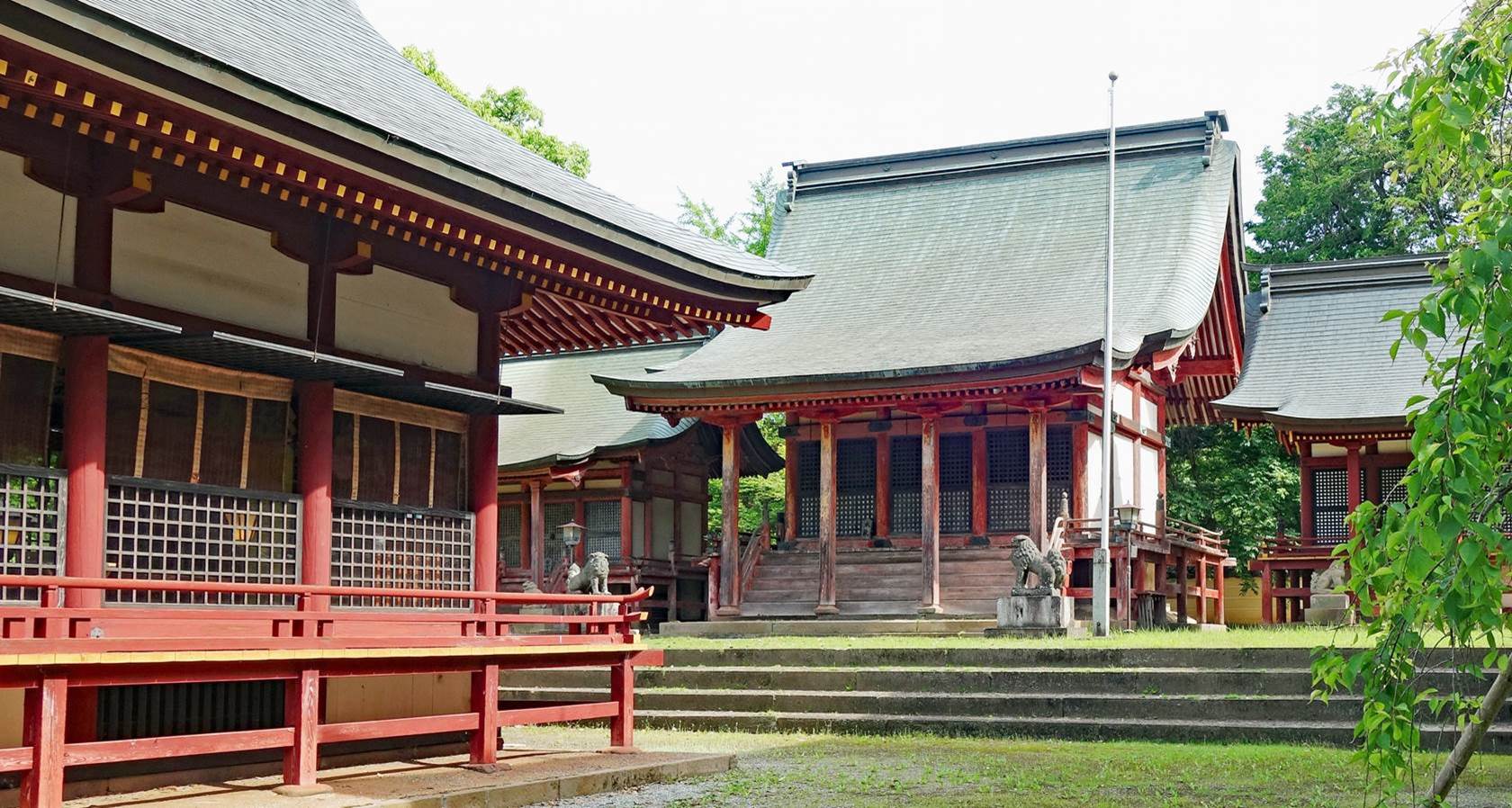
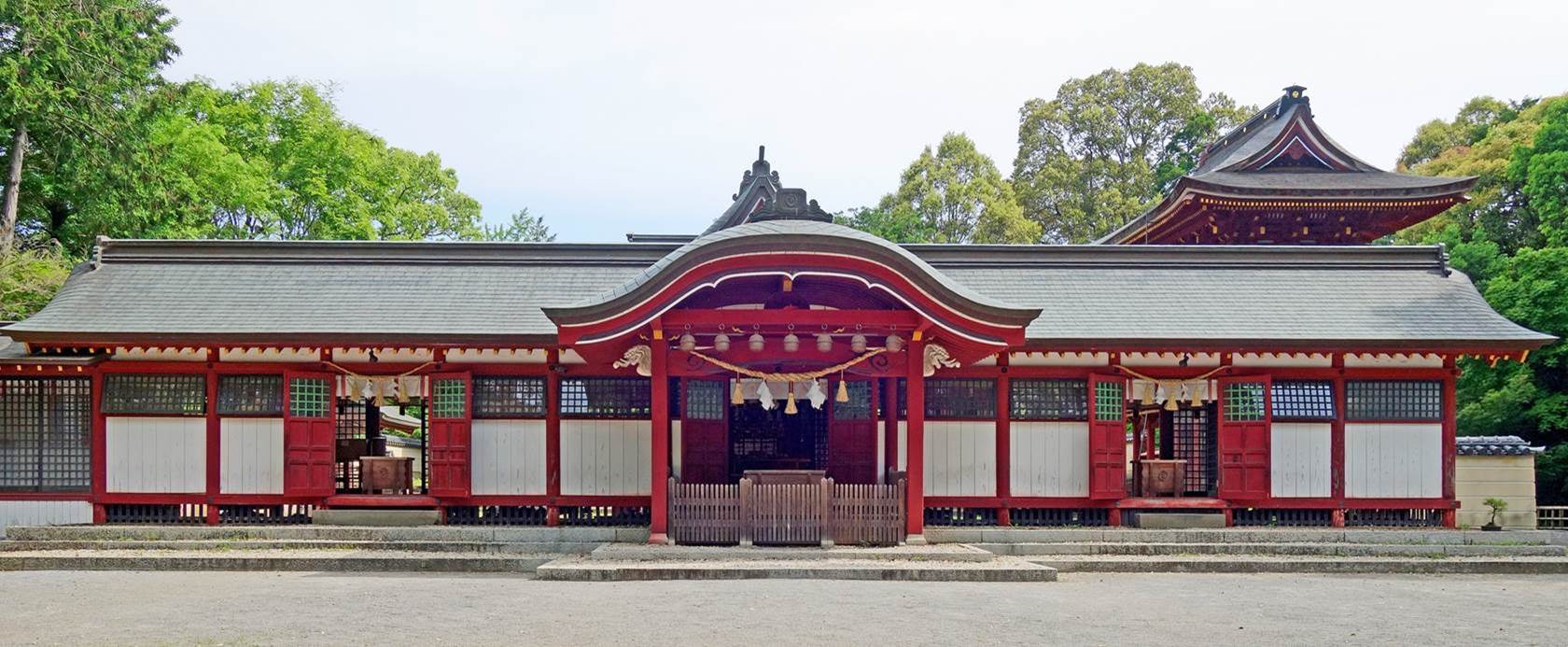
- Ema wooden wish plaques and Omikuji
fortune-telling papers at the shrine.
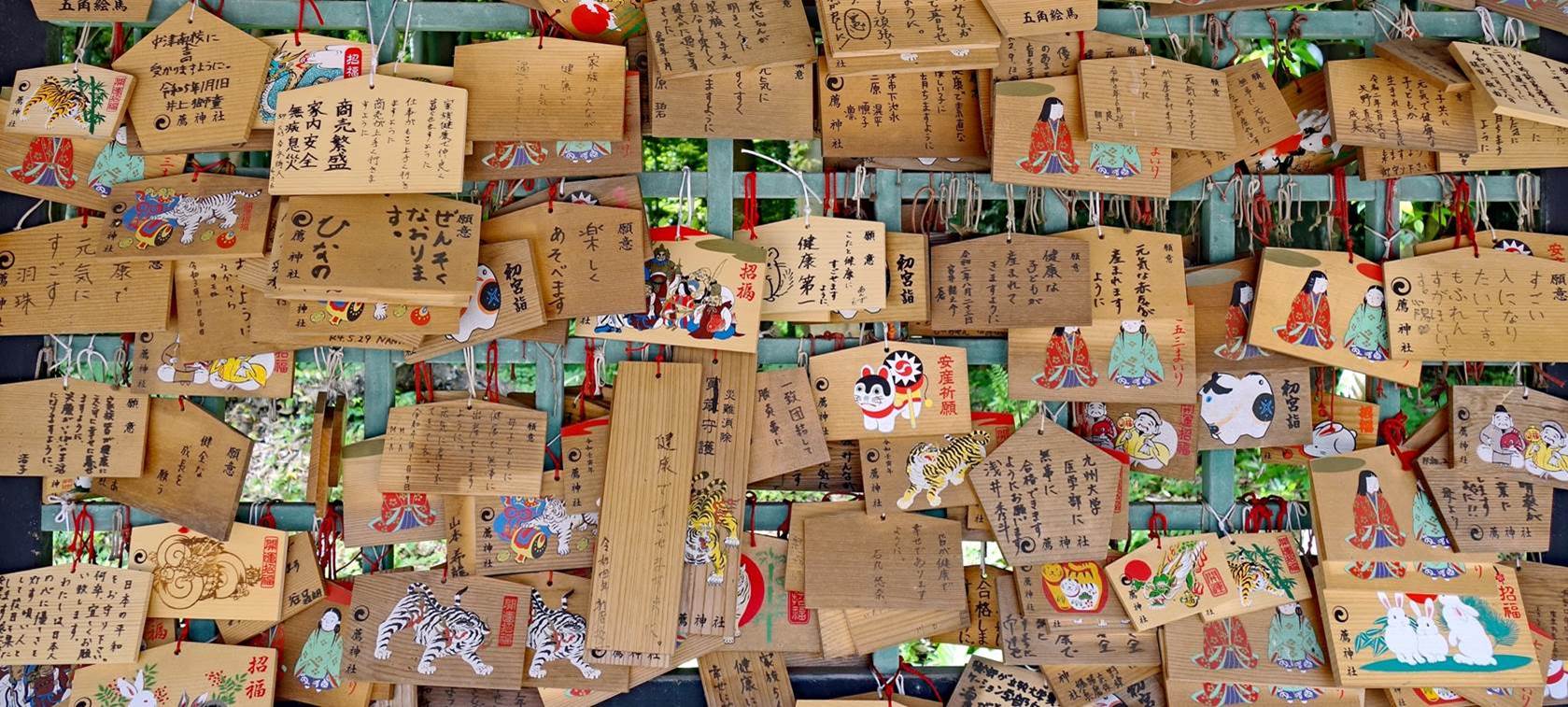
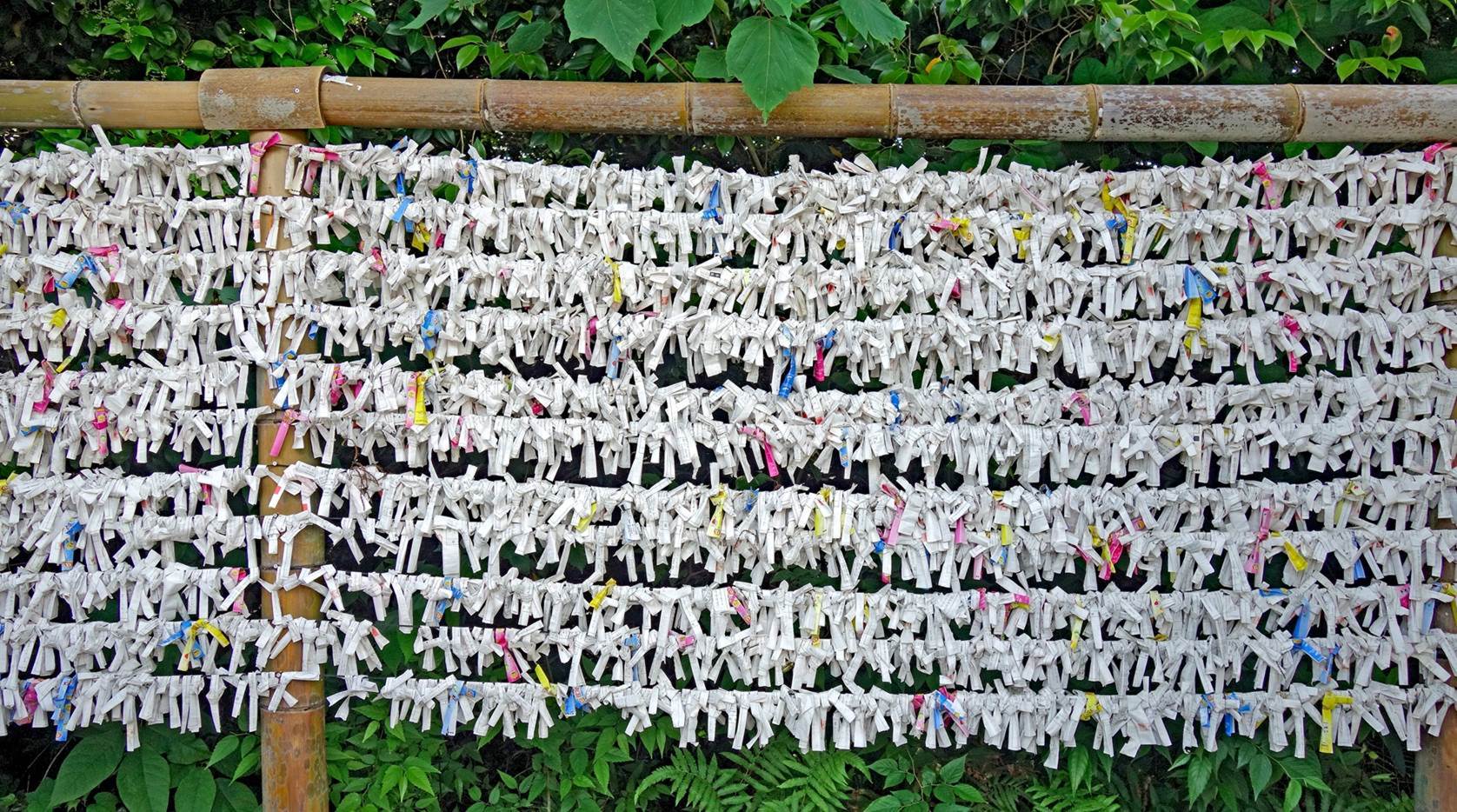
- Impressive trunks of camphor trees around the
shrine.
|
|
|
|
- Walking trail (left) and wooden bridge over a
creek (right) within the shrine grounds.
|
|
|
- ″Floating″ torii in the Misumi pond.
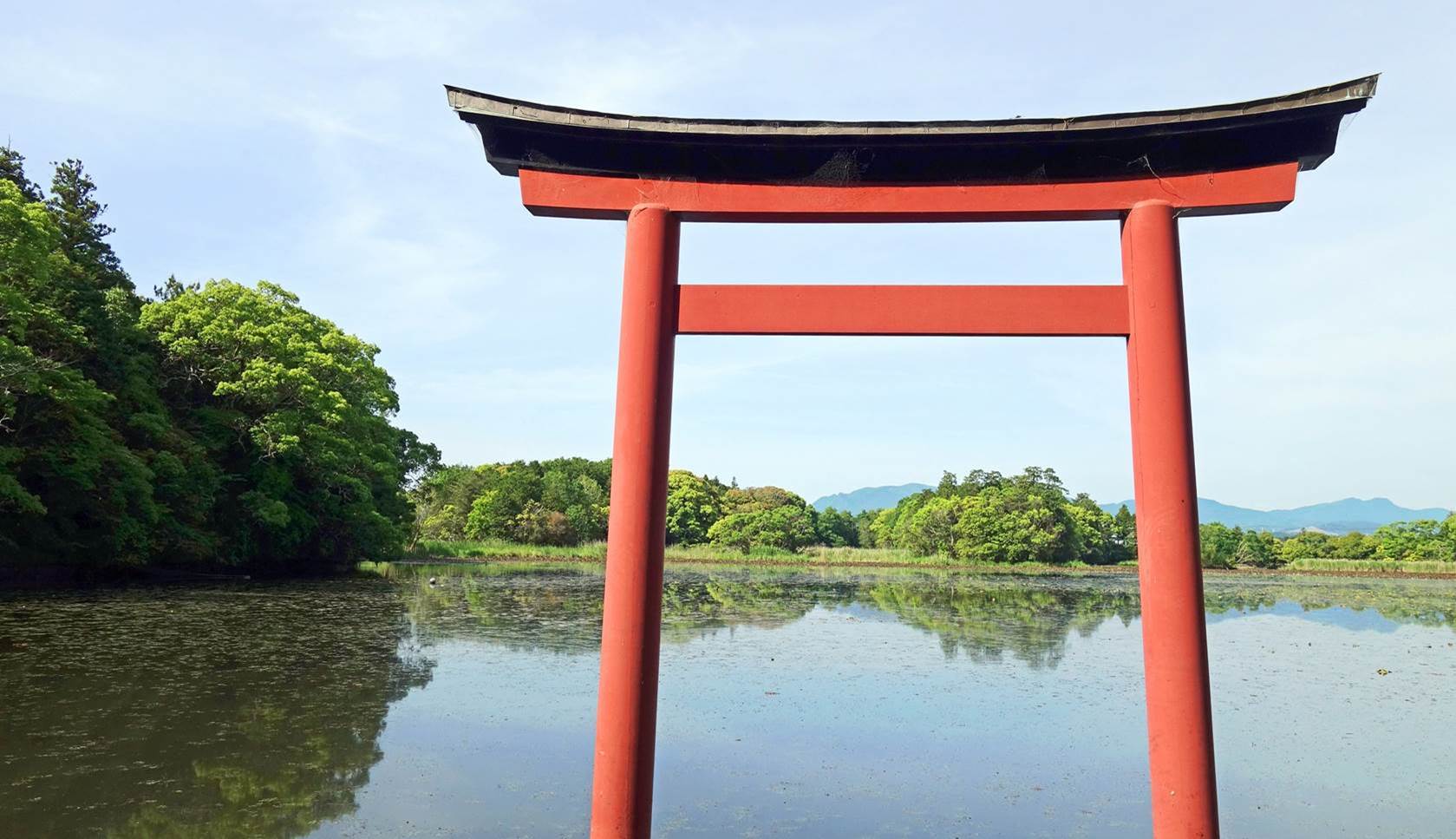
- Another view of the Misumi pond.
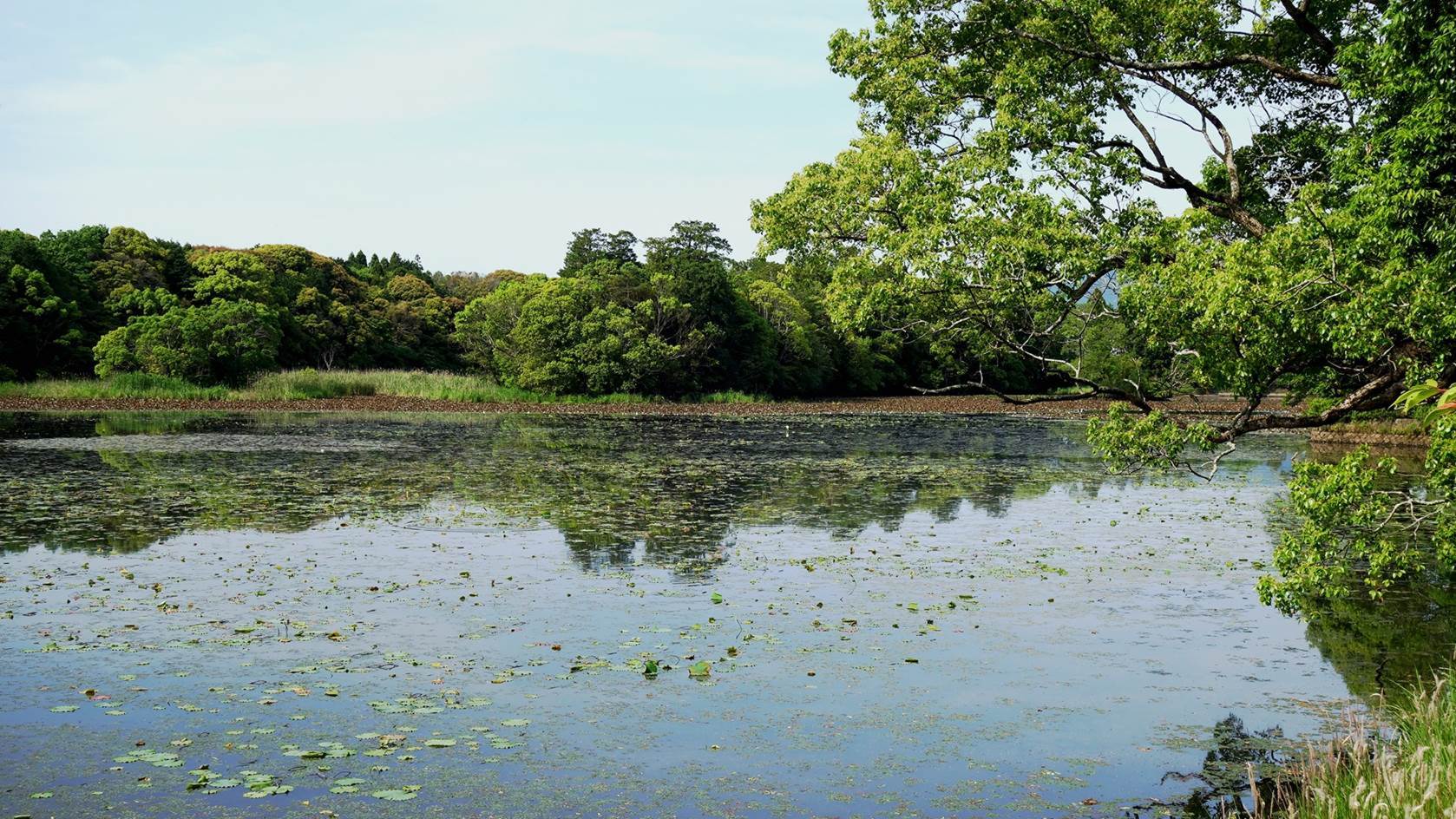
![]()
